
MINDIMA VILLAGE, CHIMBU PROVINCE, HIGHLANDS, PAPUA NEW GUINEA-DECEMBER 2008: A traditionally dressed elder in a village in Chimbu Province, Highlands, Papua New Guinea, 18 December 2008. These outfits will be worn only on special occasions, namely Sing-Sing tribal get-togethers, Moka Compensation ceremonies, Bride-Price ceremonies and feasts. The man in the picture is a leader in the village and he is on his way to a compensation ceremony in which money and pigs will be exchanged for a land deal with another village. This convoluted process of compensation is part of the traditional way of life of village people. It is based on a system which addresses a community rather than individuals and is meant as an insurance system for the general well-being of all. In reality it limits access to education and medicine and is in many ways similar to compensation litigation in the USA. No-one benefits in the long term as individual efforts are closely monitored for flaws for which compensation is then sought, this often results in a one step forwards, two steps backwards mentality. (Photo by Brent Stirton/Reportage by Getty Images.)
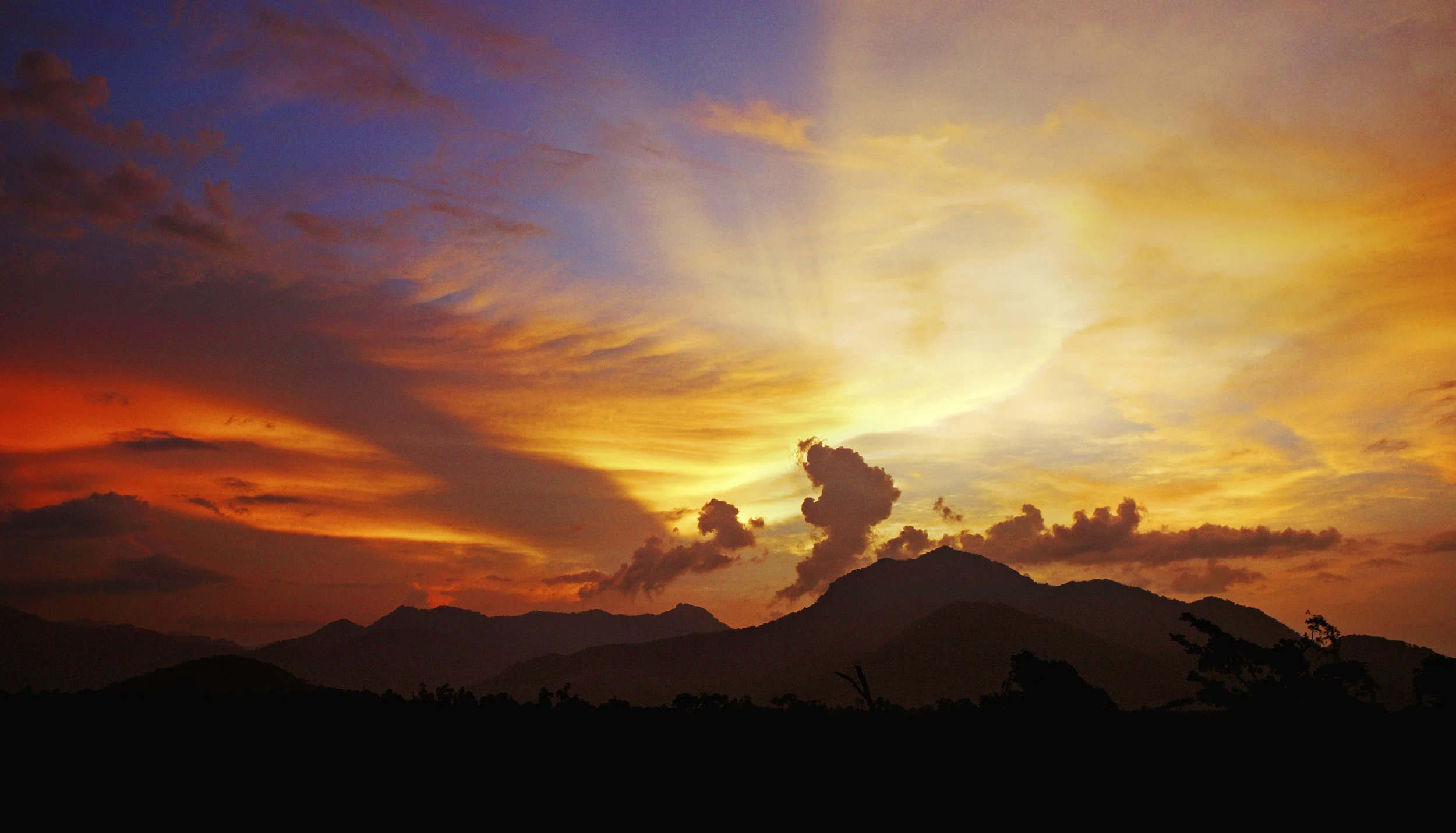
SEPIK RIVER REGION, PAPUA NEW GUINEA, AUGUST 2006: A Sunset image from the the Sepik River, a remote region of Papua New Guinea where life-style is still derived almost entirely from man's relationship to the natural world, 20 August 2006. (Photo by Brent Stirton/Reportage by Getty Images.)

MINDIMA VILLAGE, CHIMBU PROVINCE, HIGHLANDS, PAPUA NEW GUINEA-DECEMBER 2008: Traditional dress in a village in Chimbu Province, Highlands, Papua New Guinea, 18 December 2008. These outfits will be worn on special occasions, namely Sing-Sing tribal get-togethers, Moka Compensation ceremonies, Bride-Price ceremonies and feasts. (Photo by Brent Stirton/Reportage by Getty Images.)


MINDIMA VILLAGE, CHIMBU PROVINCE, HIGHLANDS, PAPUA NEW GUINEA-DECEMBER 2008: Traditional dress in a village in Chimbu Province, Highlands, Papua New Guinea, 18 December 2008. These outfits will be worn on special occasions, namely Sing-Sing tribal get-togethers, Moka Compensation ceremonies, Bride-Price ceremonies and feasts. (Photo by Brent Stirton/Reportage by Getty Images.)


SEPIK RIVER REGION, PAPUA NEW GUINEA, AUGUST 2006: Images from the the Sepik River, a remote region of Papua New Guinea where life-style is still derived almost entirely from man's relationship to the natural world, 20 August 2006. The tribesman is depicted wearing the feathers of the Cassowary Bird, a large Emu like ground based bird which is eaten by locals and its feathers used for adornment. (Photo by Brent Stirton/Reportage by Getty Images.)

TARI GAP, SOUTHERN HIGHLANDS, PAPUA NEW GUINEA-DECEMBER 2008: A Huli Wigman waits out a rain-storm in his room, smoking and applying his traditional face paint while waiting for the rain to clear, Tari Gap, Papua New Guinea, 17 December 2008. Tari is the home of the Huli Wigmen, this highlands province was once considered one of the most remote areas of the highland region of Papua New Guinea, the outside world has only really been felt in the last 20 years. Recent oil discoveries in the region are now changing it quickly. (Photo by Brent Stirton/Reportage for Getty Images.)

TARI GAP, SOUTHERN HIGHLANDS, PAPUA NEW GUINEA-DECEMBER 2008: A Huli Wigman who performs for tourists waits out a rain-storm in his room, smoking and applying his traditional face paint while waiting for the rain to clear, Tari Gap, Papua New Guinea, 17 December 2008. Tari is the home of the Huli Wigmen, this highlands province was once considered one of the most remote areas of the highland region of Papua New Guinea, the outside world has only really been felt in the last 20 years. Recent oil discoveries in the region are now changing it quickly and traditional dress is now reserved for tourism and important ceremonies only. (Photo by Brent Stirton/Reportage for Getty Images.)

TARI GAP, SOUTHERN HIGHLANDS, PAPUA NEW GUINEA-DECEMBER 2008: A Huli Wigman waits out a rain-storm, smoking and applying his traditional face paint while waiting for the rain to clear, Tari Gap, Papua New Guinea, 17 December 2008. Tari is the home of the Huli Wigmen, this highlands province was once considered one of the most remote areas of the highland region of Papua New Guinea, the outside world has only really been felt in the last 20 years. Recent oil discoveries in the region are now changing it quickly. (Photo by Brent Stirton/Reportage for Getty Images.)
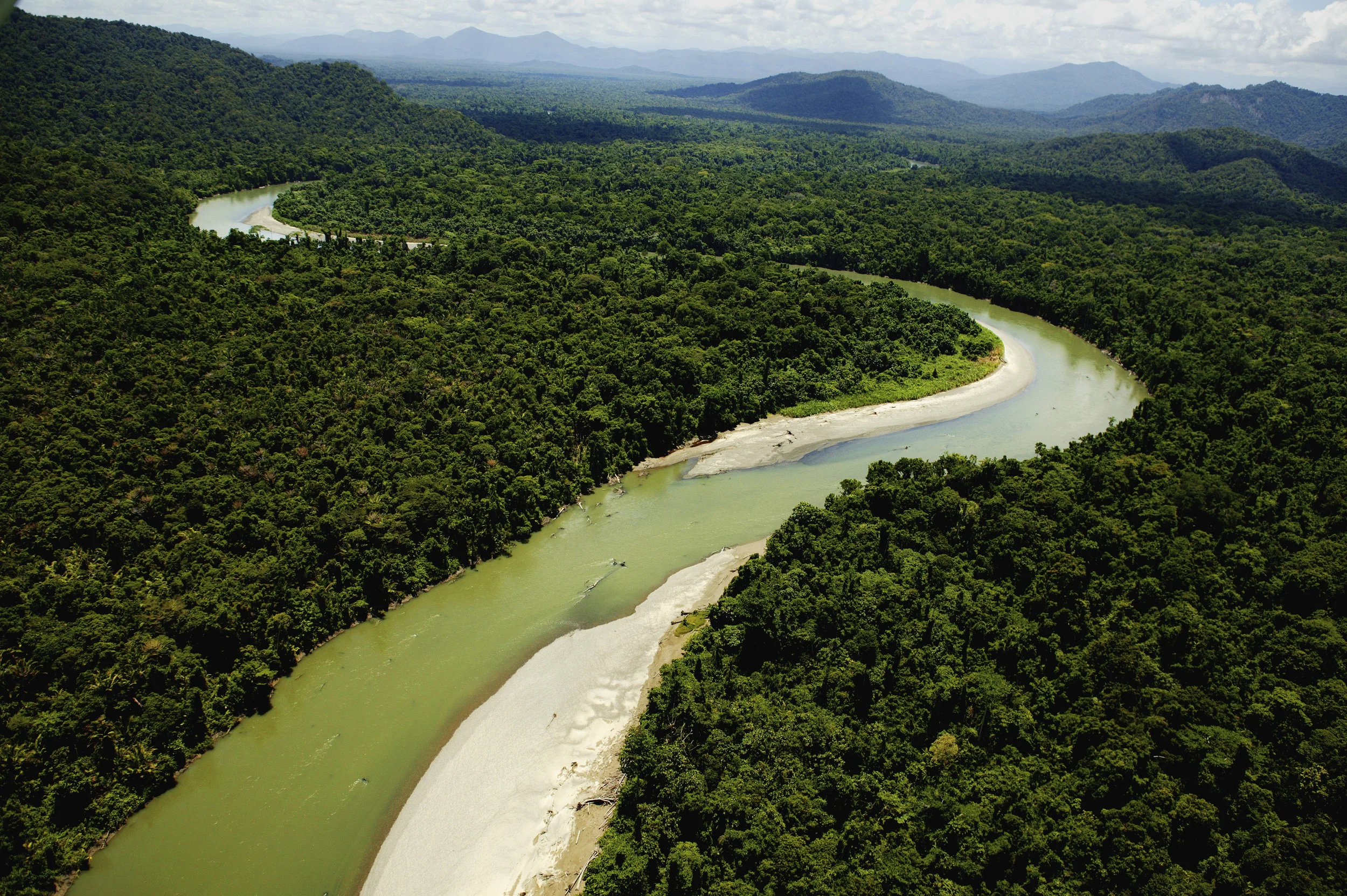
SEPIK RIVER REGION, PAPUA NEW GUINEA, AUGUST 2006: Images of the Sepik River, a remote region of Papua New Guinea where life-style is still derived almost entirely from man's relationship to the natural world, 27 August 2006. (Photo by Brent Stirton/Reportage by Getty Images.)

TARI GAP, SOUTHERN HIGHLANDS, PAPUA NEW GUINEA-DECEMBER 2008: Huli Wigmen photographed at a sing-sing, Tari Gap, Papua New Guinea, 17 December 2008. Tari is the home of the Huli tribe, the second largest tribe in PNG, this highlands province was once considered one of the most remote areas of the highland region of Papua New Guinea, the outside world has only really been felt in the last 20 years. Recent oil discoveries in the region are now changing it quickly. Education and the Church have also been a profound influence. Although men often still wear traditional headgear and some face-paint, ragged western clothing is the norm although combinations of the traditional wear and western clothing are common. (Photo by Brent Stirton/Reportage for Getty Images.)

TARI GAP, SOUTHERN HIGHLANDS, PAPUA NEW GUINEA-DECEMBER 2008: Huli Wigmen photographed at a sing-sing, Tari Gap, Papua New Guinea, 17 December 2008. Tari is the home of the Huli tribe, the second largest tribe in PNG, this highlands province was once considered one of the most remote areas of the highland region of Papua New Guinea, the outside world has only really been felt in the last 20 years. Recent oil discoveries in the region are now changing it quickly. Education and the Church have also been a profound influence. Although men often still wear traditional headgear and some face-paint, ragged western clothing is the norm although combinations of the traditional wear and western clothing are common. (Photo by Brent Stirton/Reportage for Getty Images.)

TARI GAP, SOUTHERN HIGHLANDS, PAPUA NEW GUINEA-DECEMBER 2008: Huli Wigmen photographed at a sing-sing, Tari Gap, Papua New Guinea, 17 December 2008. Tari is the home of the Huli tribe, the second largest tribe in PNG, this highlands province was once considered one of the most remote areas of the highland region of Papua New Guinea, the outside world has only really been felt in the last 20 years. Recent oil discoveries in the region are now changing it quickly. Education and the Church have also been a profound influence. Although men often still wear traditional headgear and some face-paint, ragged western clothing is the norm although combinations of the traditional wear and western clothing are common. (Photo by Brent Stirton/Reportage for Getty Images.)

MIDDLE SEPIK, PAPUA NEW GUINEA-DECEMBER 2008: Images of the Karawari people of the middle Sepik river, 15 December 2008. The Karawari are the most remote of the floodplains people, with many vllages along the river barely a generation old. The most recent settlements date only from 1996. (Photo by Brent Stirton/Reportage by Getty Images.)

MINDIMA VILLAGE, CHIMBU PROVINCE, HIGHLANDS, PAPUA NEW GUINEA-DECEMBER 2008: A Papua New Guina highland tribal ceremony depicting images of "Spirit Men," also known as "Skeleton Men" attacking an evil forest Spirit known locally as the Omo Masalai, in a village in Chimbu Province, Highlands, Papua New Guinea, 18 December 2008. Legend has it that the skeleton men are the formerly human victims of the forest spirit who attacked and ate them. The skeleton men are seen in the act of vengeance against the Forest Spirit monster. (Photo by Brent Stirton/Reportage by Getty Images.)

MINDIMA VILLAGE, CHIMBU PROVINCE, HIGHLANDS, PAPUA NEW GUINEA-DECEMBER 2008: A Papua New Guina highland tribal ceremony depicting images of "Spirit Men," also known as "Skeleton Men" attacking an evil forest Spirit known locally as the Omo Masalai, in a village in Chimbu Province, Highlands, Papua New Guinea, 18 December 2008. Legend has it that the skeleton men are the formerly human victims of the forest spirit who attacked and ate them. The skeleton men are seen in the act of vengeance against the Forest Spirit monster. (Photo by Brent Stirton/Reportage by Getty Images.)

MINDIMA VILLAGE, CHIMBU PROVINCE, HIGHLANDS, PAPUA NEW GUINEA-DECEMBER 2008: A Papua New Guina highland tribal ceremony depicting images of "Spirit Men," also known as "Skeleton Men" attacking an evil forest Spirit known locally as the Omo Masalai, in a village in Chimbu Province, Highlands, Papua New Guinea, 18 December 2008. Legend has it that the skeleton men are the formerly human victims of the forest spirit who attacked and ate them. The skeleton men are seen in the act of vengeance against the Forest Spirit monster. (Photo by Brent Stirton/Reportage by Getty Images.)
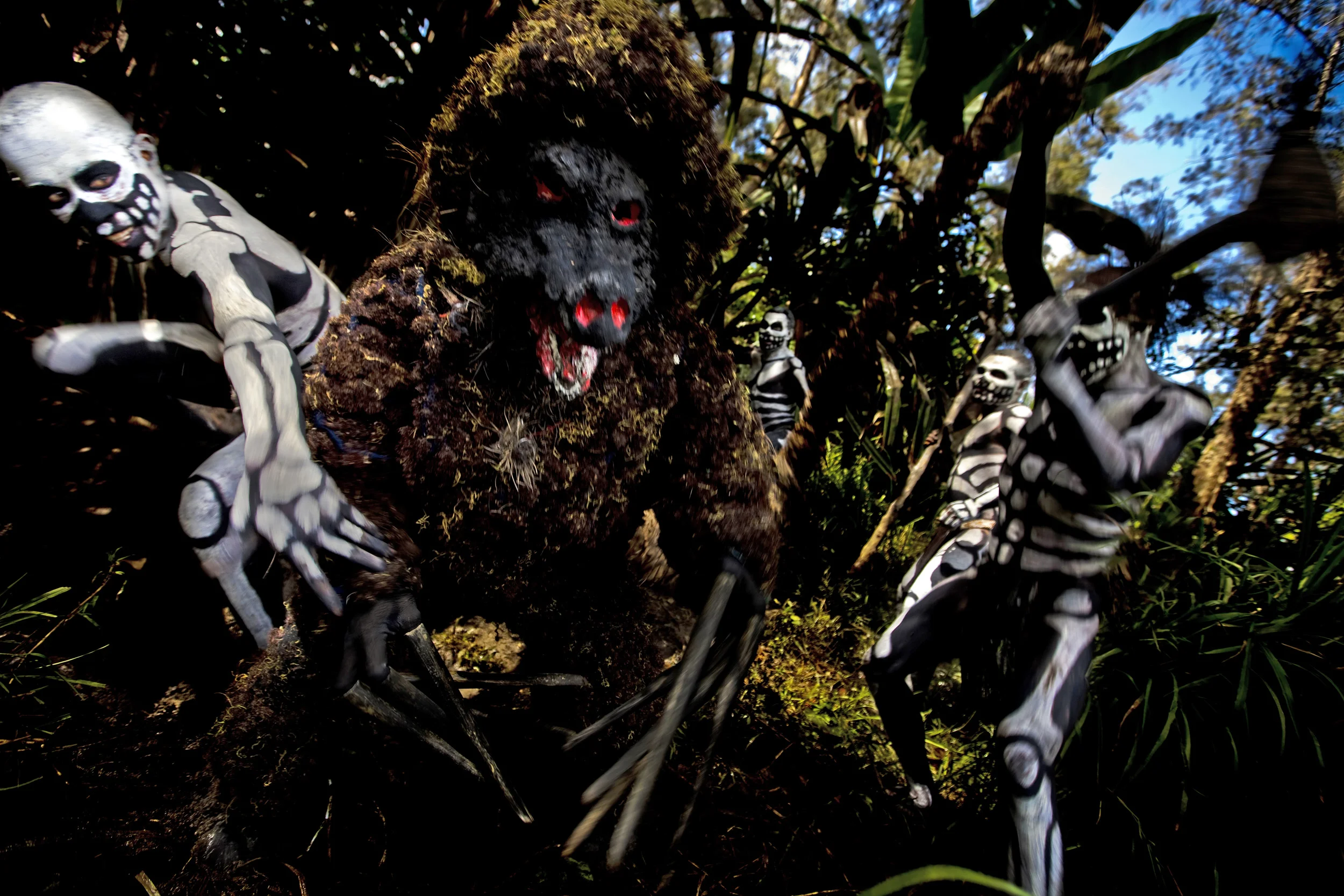
MINDIMA VILLAGE, CHIMBU PROVINCE, HIGHLANDS, PAPUA NEW GUINEA-DECEMBER 2008: A Papua New Guina highland tribal ceremony depicting images of "Spirit Men," also known as "Skeleton Men" attacking an evil forest Spirit known locally as the Omo Masalai, in a village in Chimbu Province, Highlands, Papua New Guinea, 18 December 2008. Legend has it that the skeleton men are the formerly human victims of the forest spirit who attacked and ate them. The skeleton men are seen in the act of vengeance against the Forest Spirit monster. (Photo by Brent Stirton/Reportage by Getty Images.)
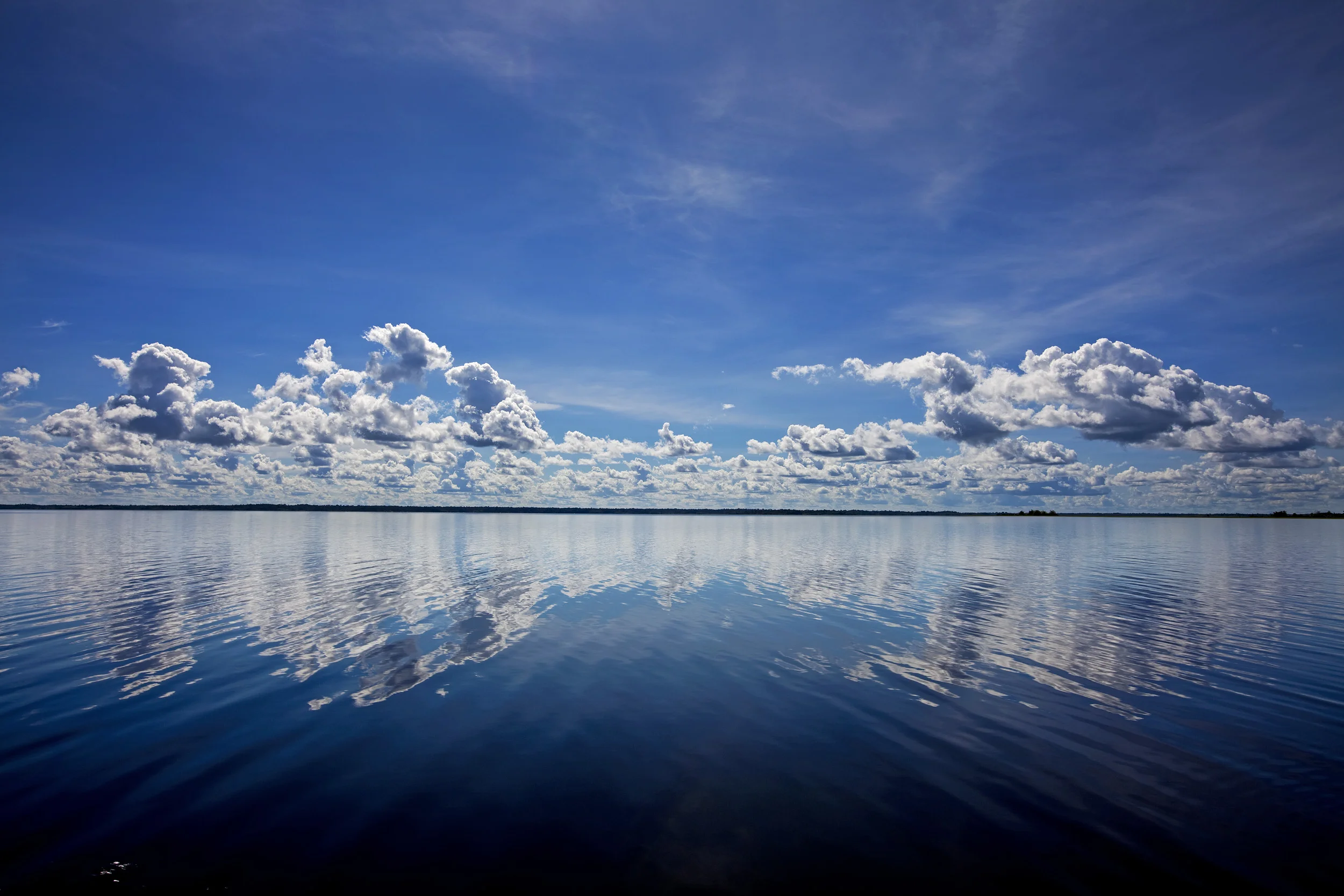
LAKE MURRAY, WESTERN PROVINCE, PAPUA NEW GUINEA-JANUARY 2008: Scenes of community life in Kubut Village, Lake Murray, Papua New Guinea, 1 January 2009. Lake Murray is a region where people have lived lives in harmony with nature for centuries. People make their living by hunting, farming, fishing, and growing rubber trees and now also with Eco-forestry. Their life-styles are dependant on the harmony between them and nature and they are trying to ensure a sustainable relationship for future generations. This has been complicated and compromised by the interventions of both international mining and logging groups over the last few decades but local community resistance is growing as rising anger mounts at the environmental damage done to rivers and forests which form the backbone of the village survival system. (Photo by Brent Stirton/Reportage by Getty Images.)

MINDIMA VILLAGE, CHIMBU PROVINCE, HIGHLANDS, PAPUA NEW GUINEA-DECEMBER 2008: Images of traditional "Mud-Men" in a village in Chimbu Province, Highlands, Papua New Guinea, 18 December 2008. "Mud-Men" are originally thought to have originated from a small Chimbu province clan who was attacked by a much larger clan to steal their land. The smaller but smarter clan is reputed to have fled into the forest and there decorated themselves in mud and in the fearsome masks depicted here. They then counter-attacked the larger clan who, thinking they were being attacked by spirits of the forest , fled the area. (Photo by Brent Stirton/Reportage by Getty Images.)
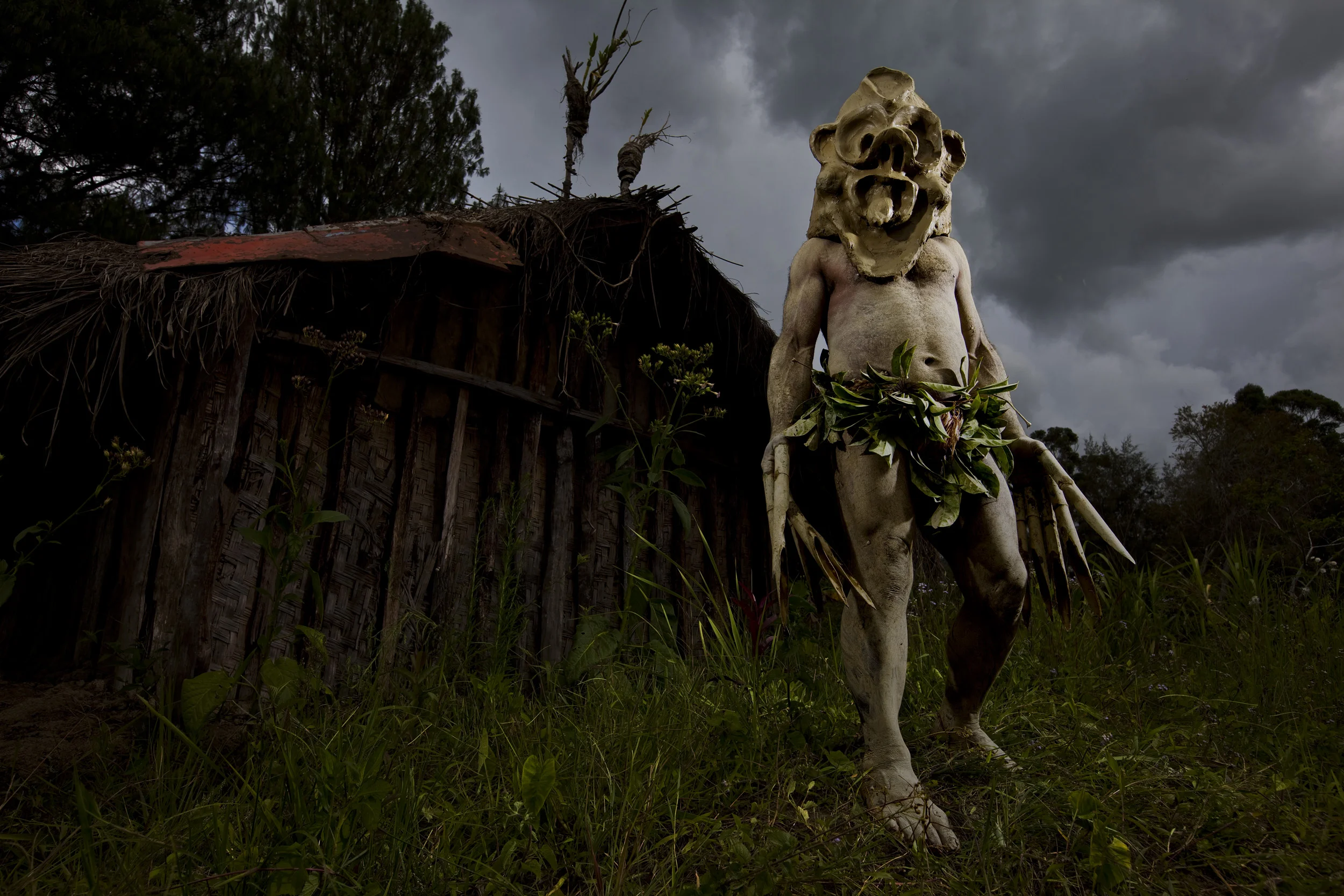
MINDIMA VILLAGE, CHIMBU PROVINCE, HIGHLANDS, PAPUA NEW GUINEA-DECEMBER 2008: Images of traditional "Mud-Men" in a village in Chimbu Province, Highlands, Papua New Guinea, 18 December 2008. "Mud-Men" are originally thought to have originated from a small Chimbu province clan who was attacked by a much larger clan to steal their land. The smaller but smarter clan is reputed to have fled into the forest and there decorated themselves in mud and in the fearsome masks depicted here. They then counter-attacked the larger clan who, thinking they were being attacked by spirits of the forest , fled the area. (Photo by Brent Stirton/Reportage by Getty Images.)
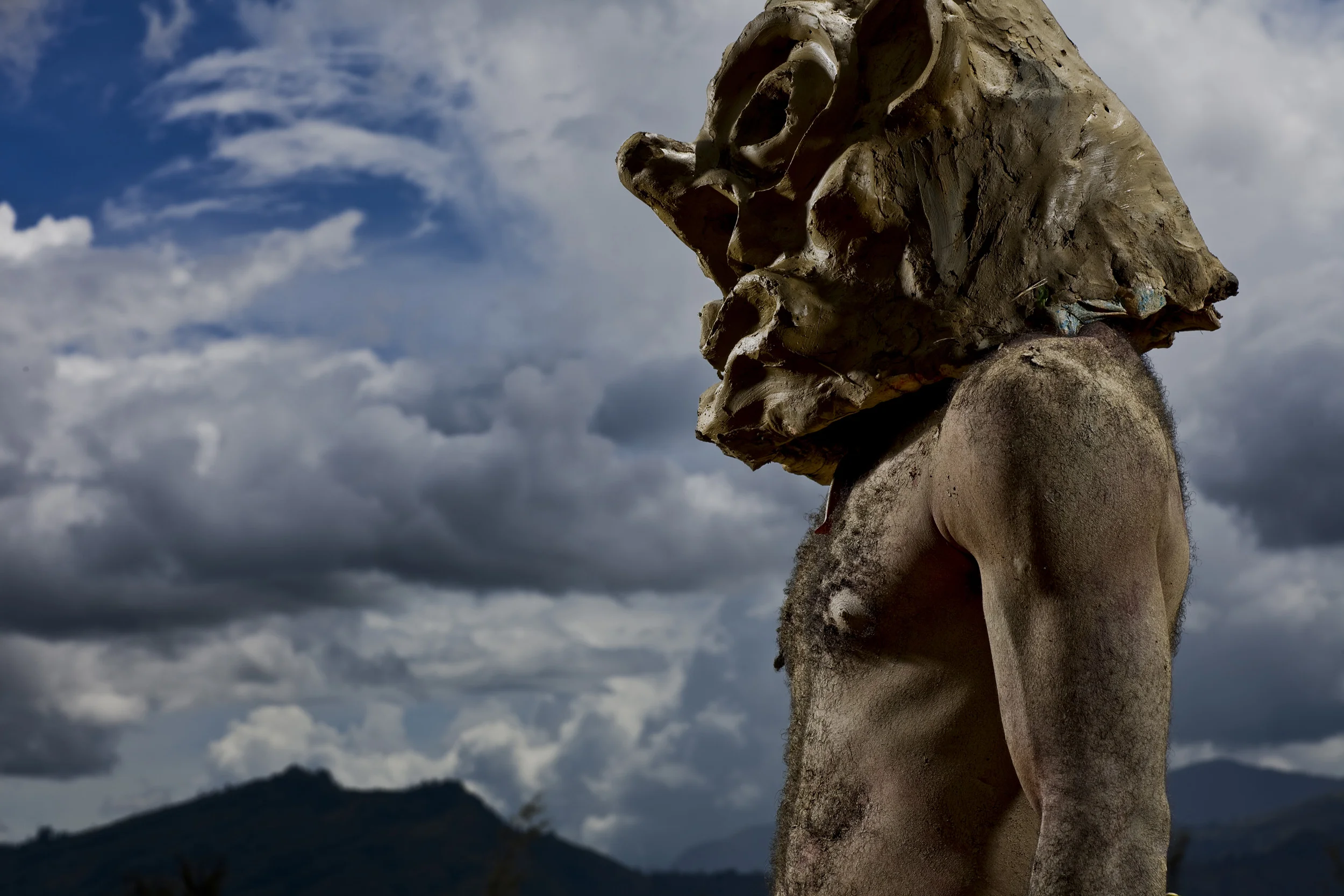
MINDIMA VILLAGE, CHIMBU PROVINCE, HIGHLANDS, PAPUA NEW GUINEA-DECEMBER 2008: Images of traditional "Mud-Men" in a village in Chimbu Province, Highlands, Papua New Guinea, 18 December 2008. "Mud-Men" are originally thought to have originated from a small Chimbu province clan who was attacked by a much larger clan to steal their land. The smaller but smarter clan is reputed to have fled into the forest and there decorated themselves in mud and in the fearsome masks depicted here. They then counter-attacked the larger clan who, thinking they were being attacked by spirits of the forest , fled the area. (Photo by Brent Stirton/Reportage by Getty Images.)

LAKE MURRY, PAPUA NEW GUINEA, JANUARY 2009: A hunting party catches wild pig and Kassowary in remote areas along the shores of Lake Murray, Papua New Guinea, 1 January 2009. These communities live lives very closely connected to the natural world. They hunt and fish and practise agriculture but always in harmony with the environment. Members of this community also chased away Malaysian Loggers in the area, citing exploitation and environmental damage. They now practise their own kind of sustainable eco-logging. (Photo by Brent Stirton/Reportage for Getty Images.)

MINDIMA VILLAGE, CHIMBU PROVINCE, HIGHLANDS, PAPUA NEW GUINEA-DECEMBER 2008: Traditional dress in a village in Chimbu Province, Highlands, Papua New Guinea, 18 December 2008. These outfits will be worn on special occasions, namely Sing-Sing tribal get-togethers, Moka Compensation ceremonies, Bride-Price ceremonies and feasts. (Photo by Brent Stirton/Reportage by Getty Images.)

MIDDLE SEPIK, PAPUA NEW GUINEA-DECEMBER 2008: Images of the Karawari people of the middle Sepik river, 15 December 2008. The Karawari are the most remote of the floodplains people, with many vllages along the river barely a generation old. The most recent settlements date only from 1996. (Photo by Brent Stirton/Reportage by Getty Images.)

MIDDLE SEPIK, PAPUA NEW GUINEA-DECEMBER 2008: Images of the Karawari people of the middle Sepik river, 15 December 2008. The Karawari are the most remote of the floodplains people, with many vllages along the river barely a generation old. The most recent settlements date only from 1996. (Photo by Brent Stirton/Reportage by Getty Images.)
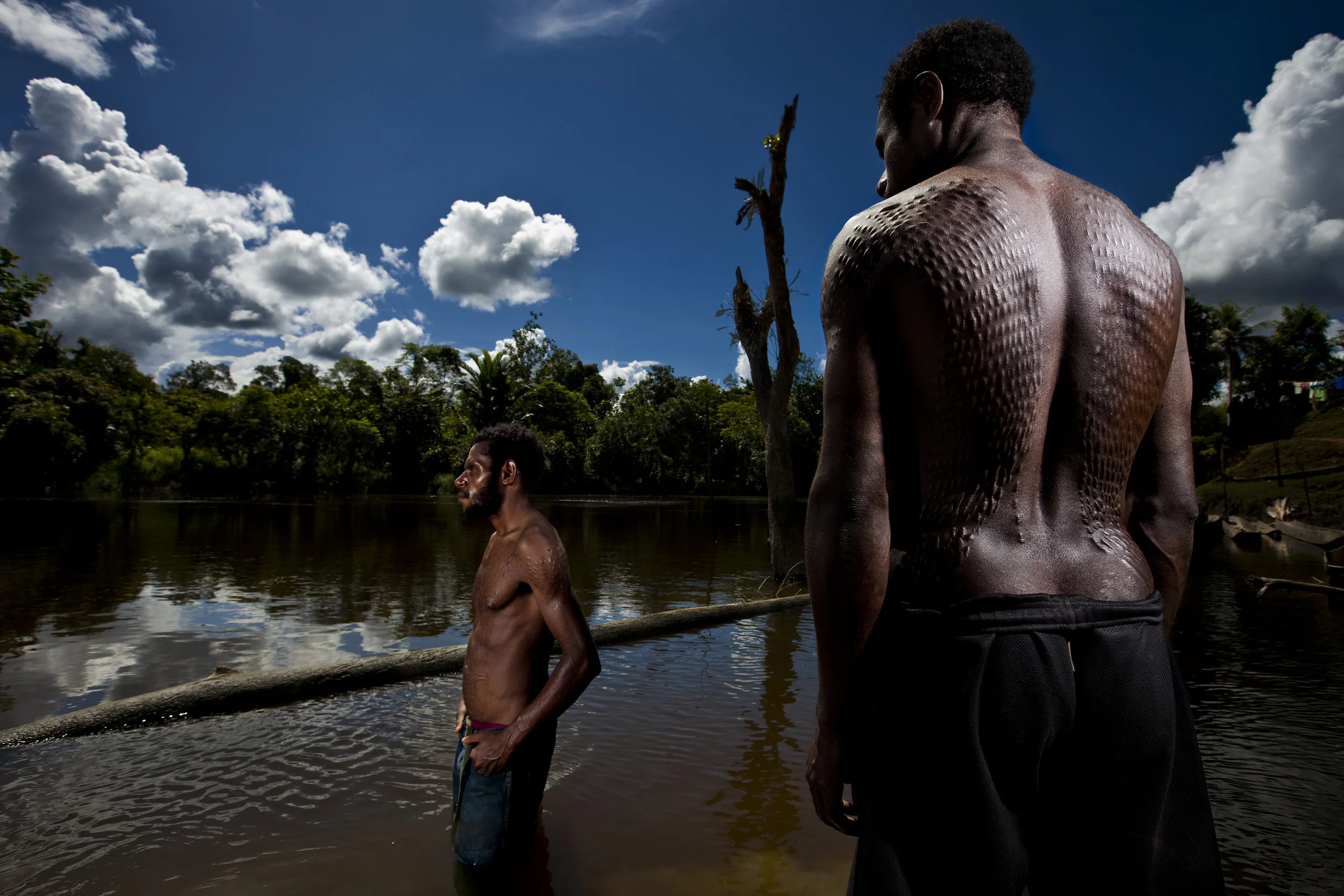
MIDDLE SEPIK, PAPUA NEW GUINEA-DECEMBER 2008: Images of the Karawari people of the middle Sepik river, 15 December 2008. The Karawari are the most remote of the floodplains people, with many vllages along the river barely a generation old. The most recent settlements date only from 1996. (Photo by Brent Stirton/Reportage by Getty Images.)
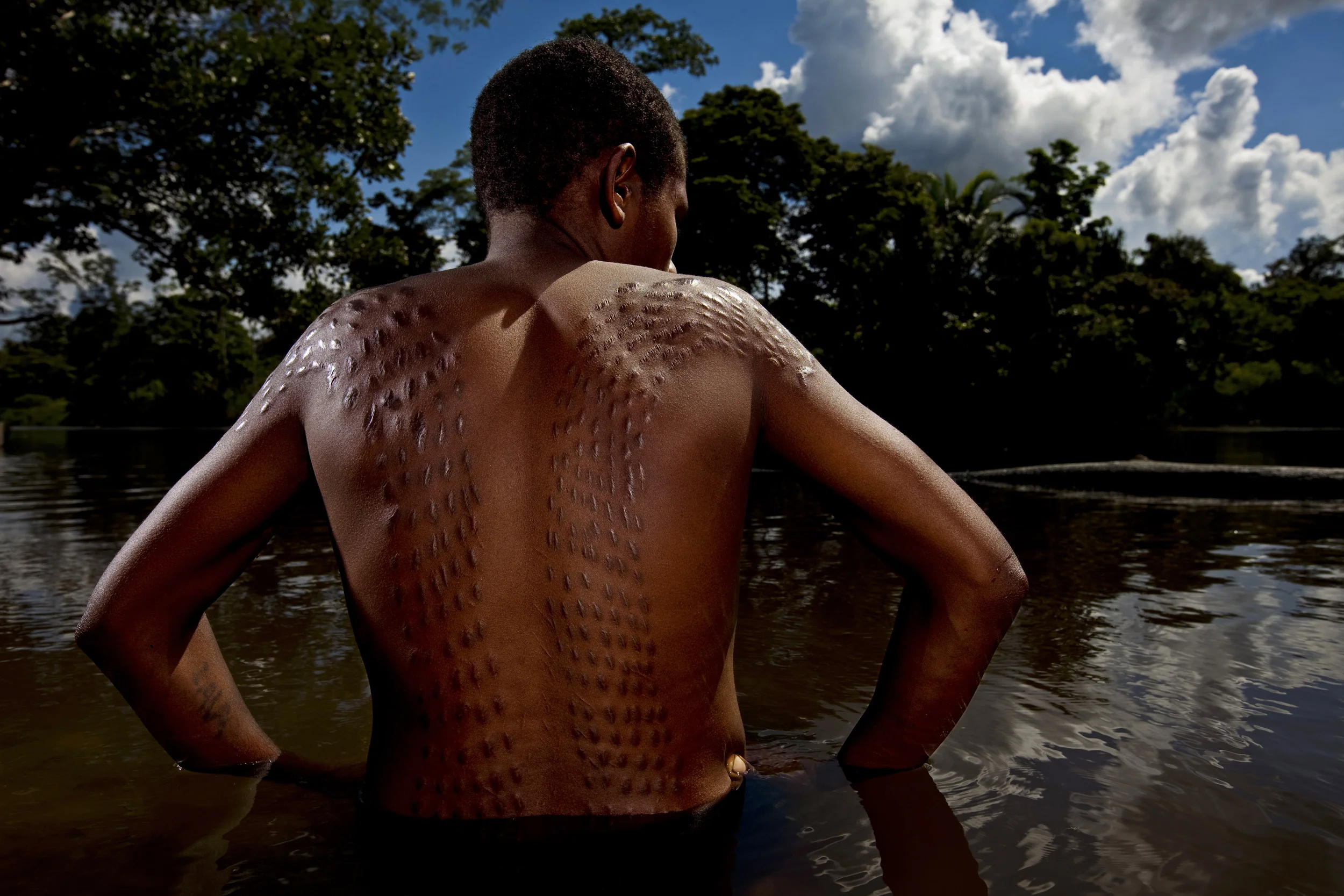
MIDDLE SEPIK, PAPUA NEW GUINEA-DECEMBER 2008: Images of the Karawari people of the middle Sepik river, 15 December 2008. The Karawari are the most remote of the floodplains people, with many vllages along the river barely a generation old. The most recent settlements date only from 1996. (Photo by Brent Stirton/Reportage by Getty Images.)
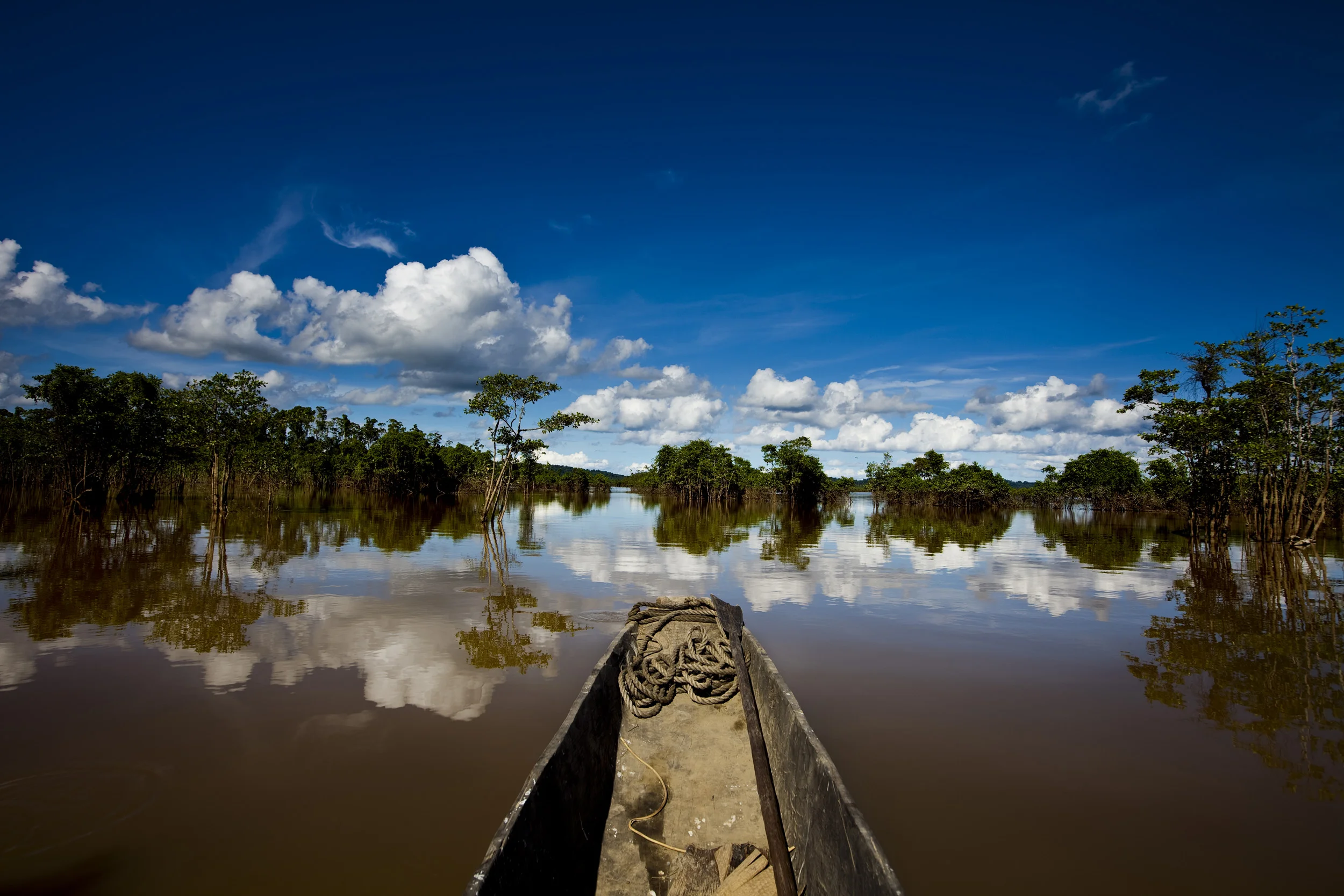
MIDDLE SEPIK, PAPUA NEW GUINEA-DECEMBER 2008: Images of the Karawari people of the middle Sepik river, 15 December 2008. The Karawari are the most remote of the floodplains people, with many vllages along the river barely a generation old. The most recent settlements date only from 1996. (Photo by Brent Stirton/Reportage by Getty Images.)

MOUNT HAGEN, HIGHLANDS, PAPUA NEW GUINEA-DECEMBER 2008: A village elder dressed in the traditional ceremonial dress for men in Mount Hagen, Papua New Guinea, 16 December 2008. (Photo by Brent Stirton/Reportage for Getty Images.)

MINDIMA VILLAGE, CHIMBU PROVINCE, HIGHLANDS, PAPUA NEW GUINEA-DECEMBER 2008: Traditional dress in a village in Chimbu Province, Highlands, Papua New Guinea, 18 December 2008. These outfits will be worn on special occasions, namely Sing-Sing tribal get-togethers, Moka Compensation ceremonies, Bride-Price ceremonies and feasts. (Photo by Brent Stirton/Reportage by Getty Images.)
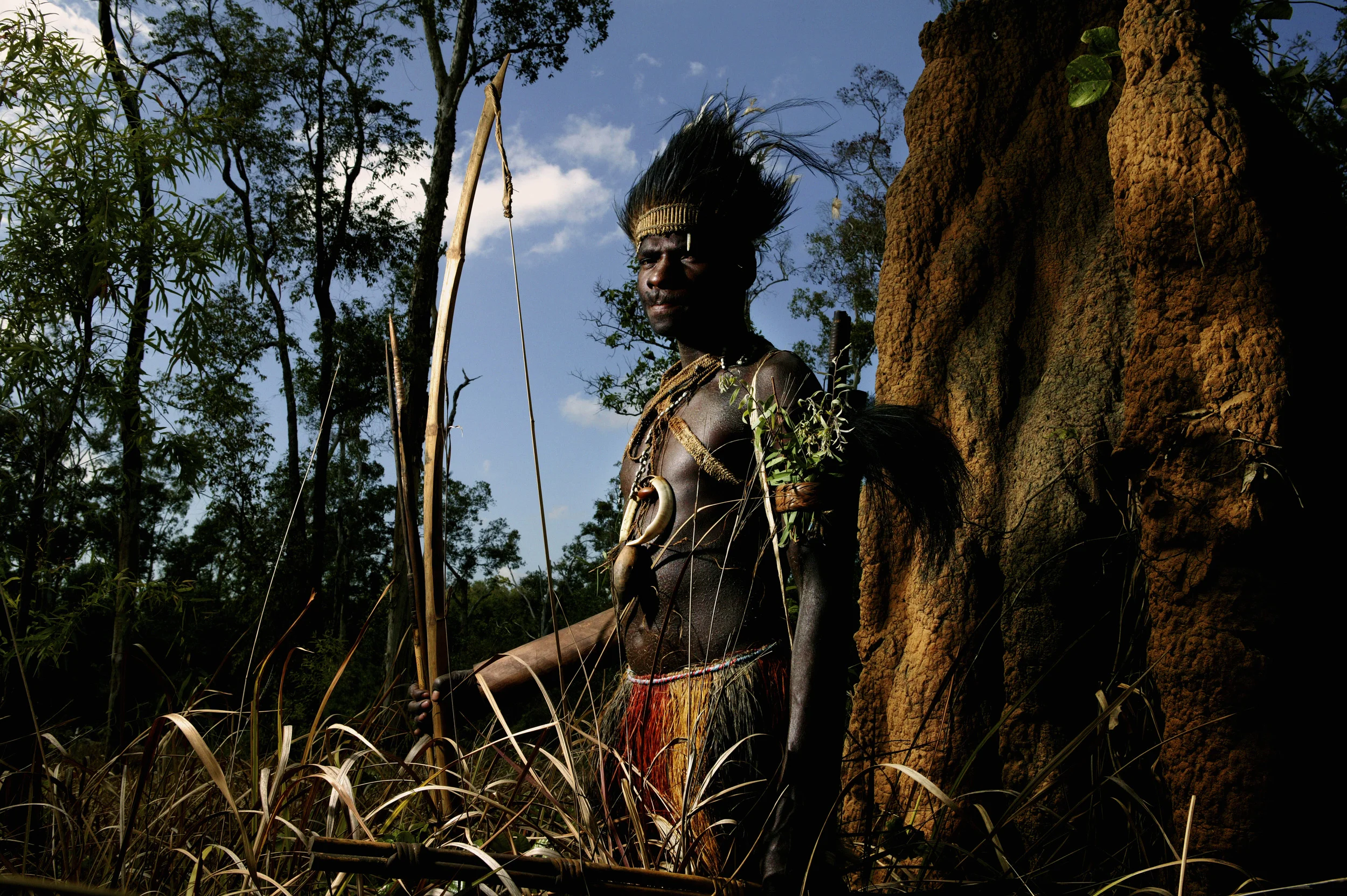
FLY RIVER REGION, PAPUA NEW GUINEA, AUGUST 2006: Images of local people from the Fly River, a remote region of Papua New Guinea where life-style is still derived almost entirely from man's relationship to the natural world, 27 August 2006. (Photo by Brent Stirton/Reportage by Getty Images.)

MIDDLE SEPIK, PAPUA NEW GUINEA-DECEMBER 2008: Images of the Karawari people of the middle Sepik river, 15 December 2008. The Karawari are the most remote of the floodplains people, with many vllages along the river barely a generation old. The most recent settlements date only from 1996. (Photo by Brent Stirton/Reportage by Getty Images.)

LAKE MURRY, PAPUA NEW GUINEA, JANUARY 2009: A hunting party catches wild pig and Kassowary in remote areas along the shores of Lake Murray, Papua New Guinea, 1 January 2009. These communities live lives very closely connected to the natural world. They hunt and fish and practise agriculture but always in harmony with the environment. Members of this community also chased away Malaysian Loggers in the area, citing exploitation and environmental damage. They now practise their own kind of sustainable eco-logging. (Photo by Brent Stirton/Reportage for Getty Images.)
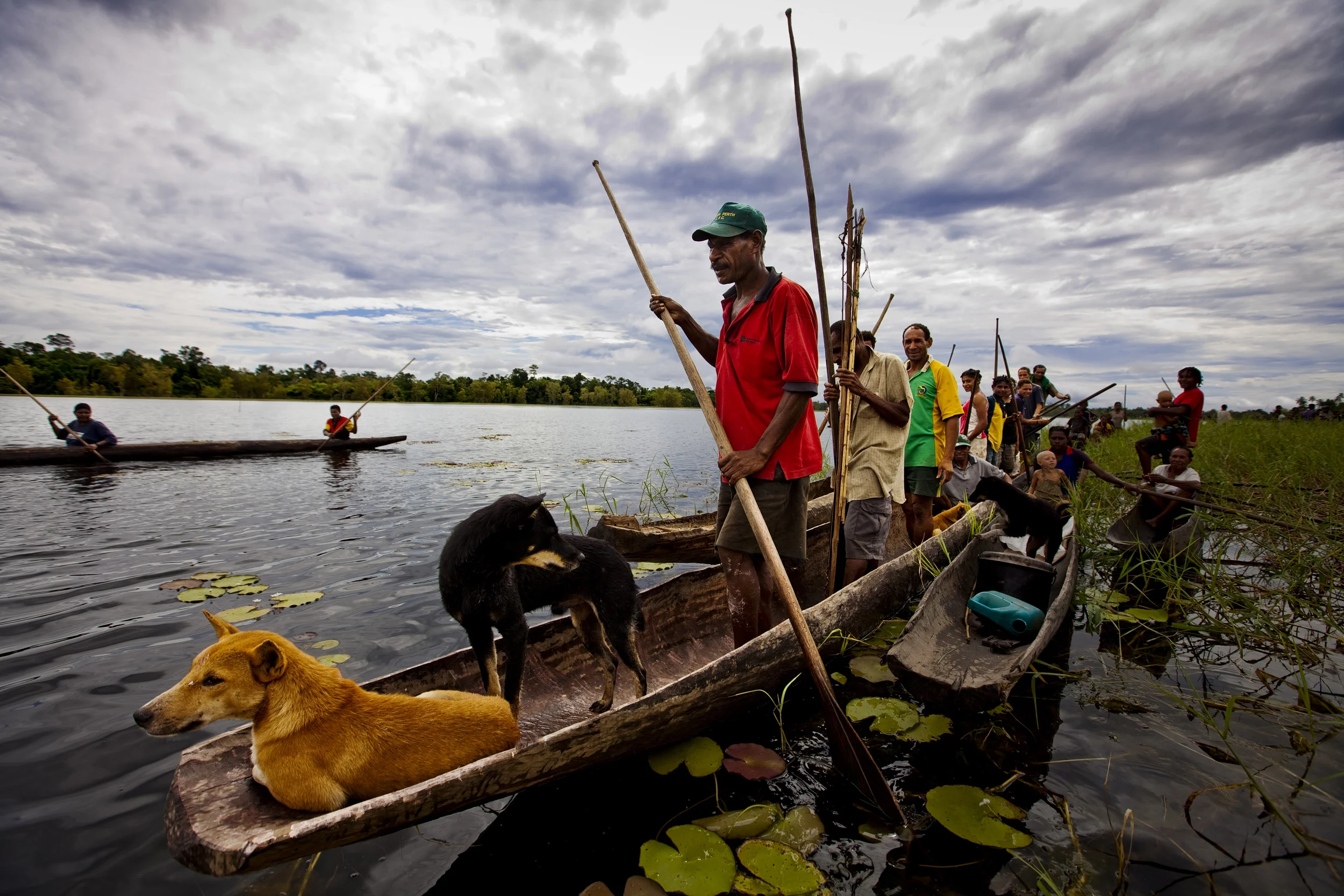
LAKE MURRY, PAPUA NEW GUINEA, JANUARY 2009: A hunting party gathers to catch wild pig and Kassowary in remote areas along the shores of Lake Murray, Papua New Guinea, 1 January 2009. These communities live lives very closely connected to the natural world. They hunt and fish and practise agriculture but always in harmony with the environment. Members of this community also chased away Malaysian Loggers in the area, citing exploitation and environmental damage. They now practise their own kind of sustainable eco-logging. (Photo by Brent Stirton/Reportage for Getty Images.)

FLY RIVER REGION, PAPUA NEW GUINEA, AUGUST 2006: Images of local people on a hunting trip along the Fly River, a remote region of Papua New Guinea where life-style is still derived almost entirely from man's relationship to the natural world, 27 August 2006. (Photo by Brent Stirton/Reportage by Getty Images.)
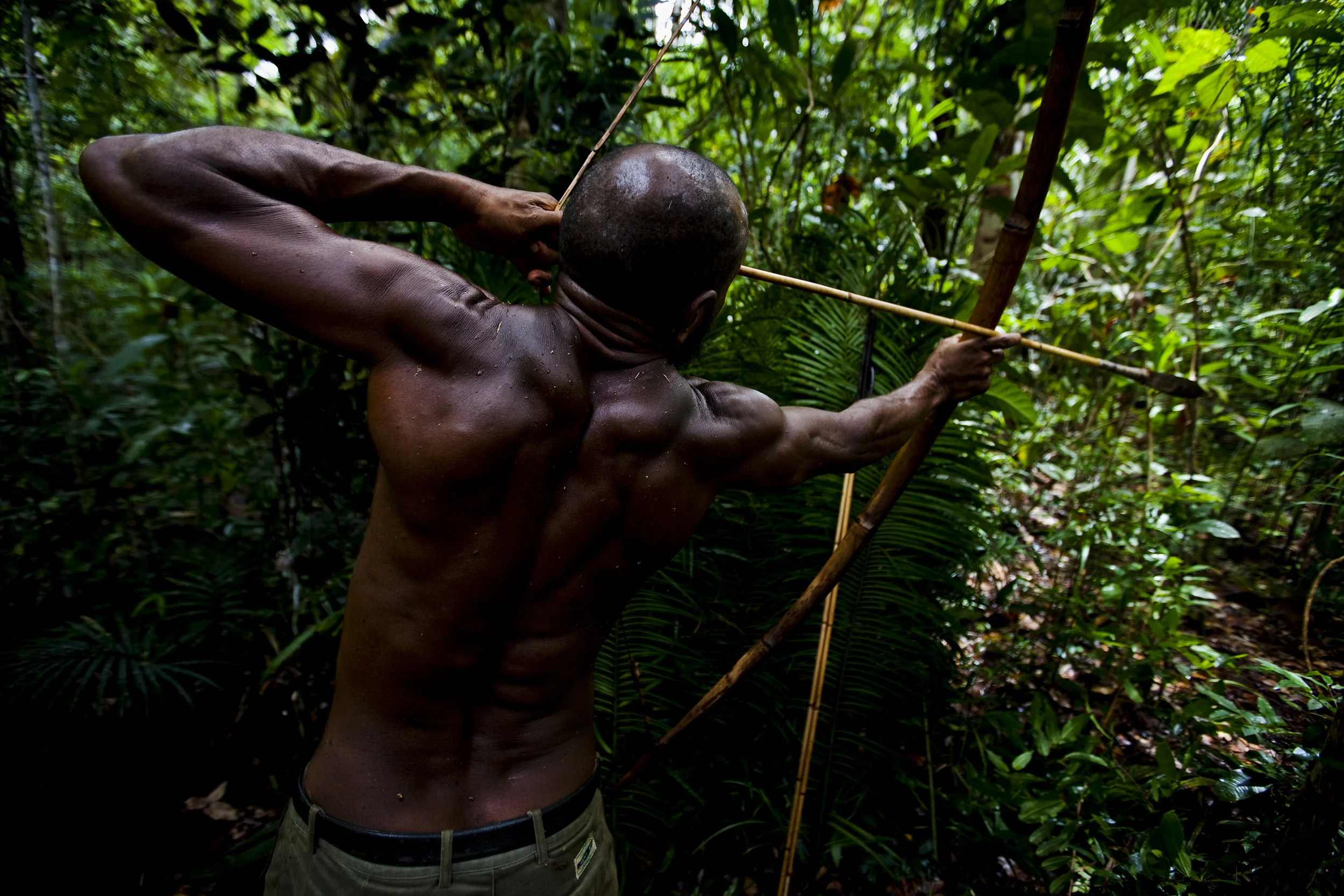
LAKE MURRY, PAPUA NEW GUINEA, JANUARY 2009: A hunting party catches wild pig and Kassowary in remote areas along the shores of Lake Murray, Papua New Guinea, 1 January 2009. These communities live lives very closely connected to the natural world. They hunt and fish and practise agriculture but always in harmony with the environment. Members of this community also chased away Malaysian Loggers in the area, citing exploitation and environmental damage. They now practise their own kind of sustainable eco-logging. (Photo by Brent Stirton/Reportage for Getty Images.)
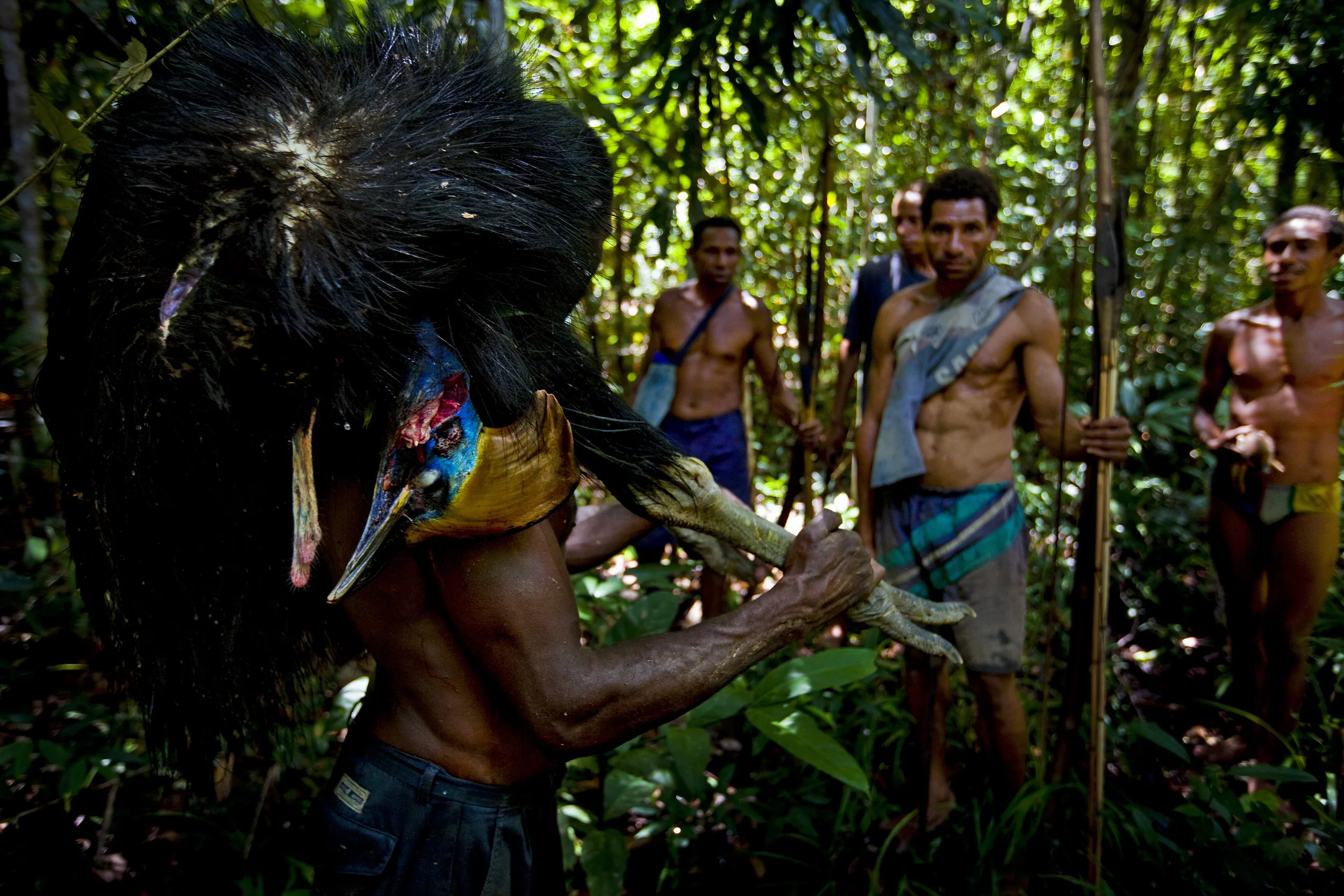
LAKE MURRY, PAPUA NEW GUINEA, JANUARY 2009: A hunting party catches wild pig and Kassowary in remote areas along the shores of Lake Murray, Papua New Guinea, 1 January 2009. These communities live lives very closely connected to the natural world. They hunt and fish and practise agriculture but always in harmony with the environment. Members of this community also chased away Malaysian Loggers in the area, citing exploitation and environmental damage. They now practise their own kind of sustainable eco-logging. (Photo by Brent Stirton/Reportage for Getty Images.)

FLY RIVER REGION, PAPUA NEW GUINEA, AUGUST 2006: Images of a local man carrying a wallaby he has killed on a hunting trip along the Fly River, a remote region of Papua New Guinea where life-style is still derived almost entirely from man's relationship to the natural world, 27 August 2006. (Photo by Brent Stirton/Reportage by Getty Images.)

LAKE MURRY, PAPUA NEW GUINEA, JANUARY 2009: A hunting party catches wild pig and Kassowary in remote areas along the shores of Lake Murray, Papua New Guinea, 1 January 2009. These communities live lives very closely connected to the natural world. They hunt and fish and practise agriculture but always in harmony with the environment. Members of this community also chased away Malaysian Loggers in the area, citing exploitation and environmental damage. They now practise their own kind of sustainable eco-logging. (Photo by Brent Stirton/Reportage for Getty Images.)
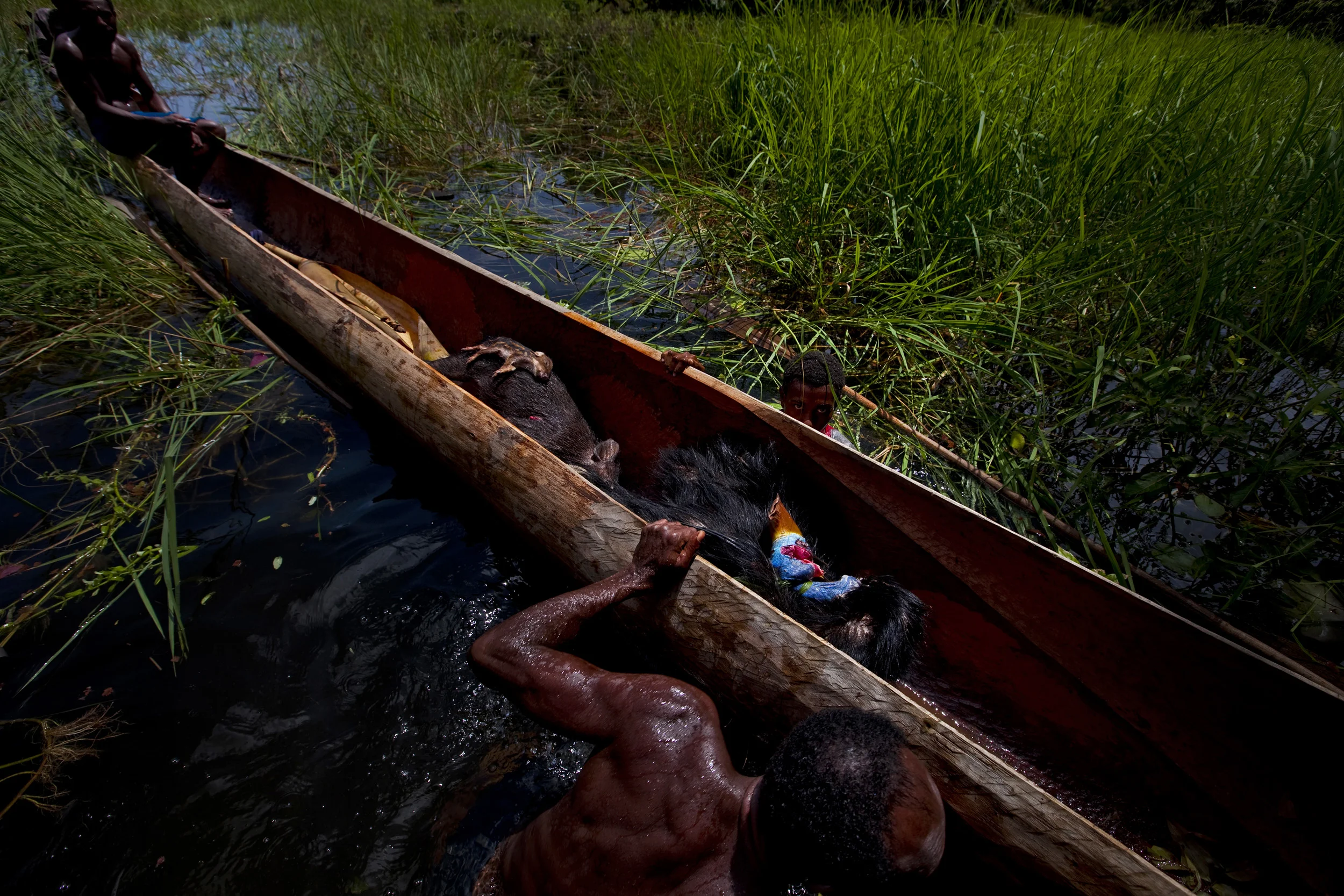
LAKE MURRY, PAPUA NEW GUINEA, JANUARY 2009: A hunting party catches wild pig and Kassowary in remote areas along the shores of Lake Murray, Papua New Guinea, 1 January 2009. These communities live lives very closely connected to the natural world. They hunt and fish and practise agriculture but always in harmony with the environment. Members of this community also chased away Malaysian Loggers in the area, citing exploitation and environmental damage. They now practise their own kind of sustainable eco-logging. (Photo by Brent Stirton/Reportage for Getty Images.)

MINDIMA VILLAGE, CHIMBU PROVINCE, HIGHLANDS, PAPUA NEW GUINEA-DECEMBER 2008: A courtship ceremony in a village in Chimbu Province, Highlands, Papua New Guinea, 18 December 2008. A boy who is atttracted to a girl will approach her and initiate these ceremonies very innocently, they will both gather a number of chaperones, at least six each. They then meet in the Womens house, under the strict supervision of the mothers and aunts of the girl. They sit down in a line with girls facing one way and boys the other way. They then sing songs and enjoy each others company. The girls virginity is highly prized and protected and is a key factor in the Bride-Price. After these meetings have been going on for a few months the girls parents will approach the boy and demand his intentions. If honourable the two clans will enter into negotiations for Bride-Price, transfer of said assets will take place soon after and the girl will belong to the boy. (Photo by Brent Stirton/Reportage by Getty Images.)
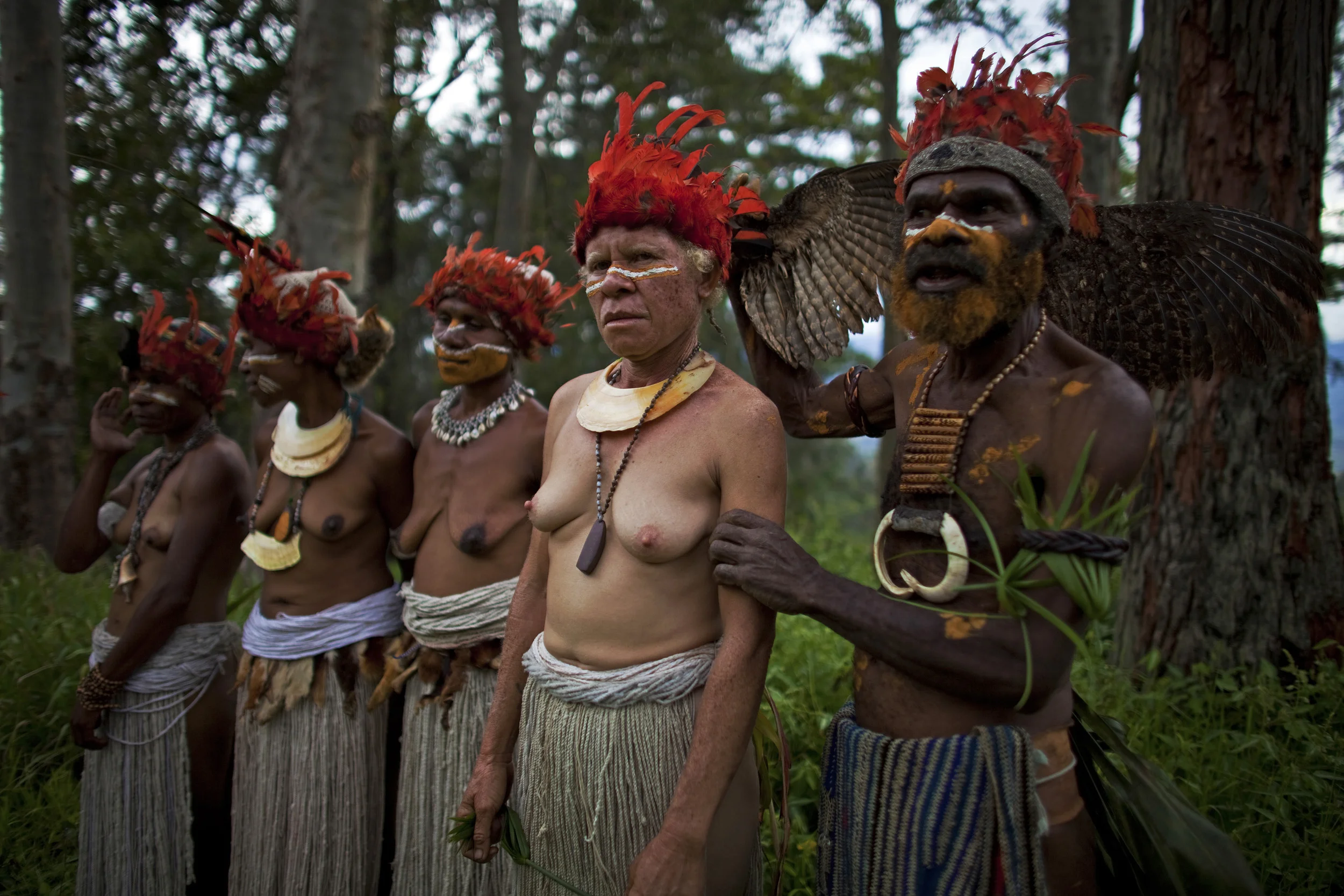
MINDIMA VILLAGE, CHIMBU PROVINCE, HIGHLANDS, PAPUA NEW GUINEA-DECEMBER 2008: Images from a Bride-Price ceremony in a village in Chimbu Province, Highlands, Papua New Guinea, 18 December 2008. In a Bride-Price ceremony a women is bought from her family and her clan by another clan and paid for in pigs, the local currency in Kina, cattle, sometimes cows and often decorative objects that are held to have value. Once the gifts have been exchanged, the woman then belongs to her new husband. In many cases this objectifying of women in PNG culture is one of the key reasons behind domestic abuse. (Photo by Brent Stirton/Reportage by Getty Images.)

MINDIMA VILLAGE, CHIMBU PROVINCE, HIGHLANDS, PAPUA NEW GUINEA-DECEMBER 2008: Images from a Bride-Price ceremony in a village in Chimbu Province, Highlands, Papua New Guinea, 18 December 2008. In a Bride-Price ceremony a women is bought from her family and her clan by another clan and paid for in pigs, the local currency in Kina, cattle, sometimes cows and often decorative objects that are held to have value. Once the gifts have been exchanged, the woman then belongs to her new husband. In many cases this objectifying of women in PNG culture is one of the key reasons behind domestic abuse. (Photo by Brent Stirton/Reportage by Getty Images.)
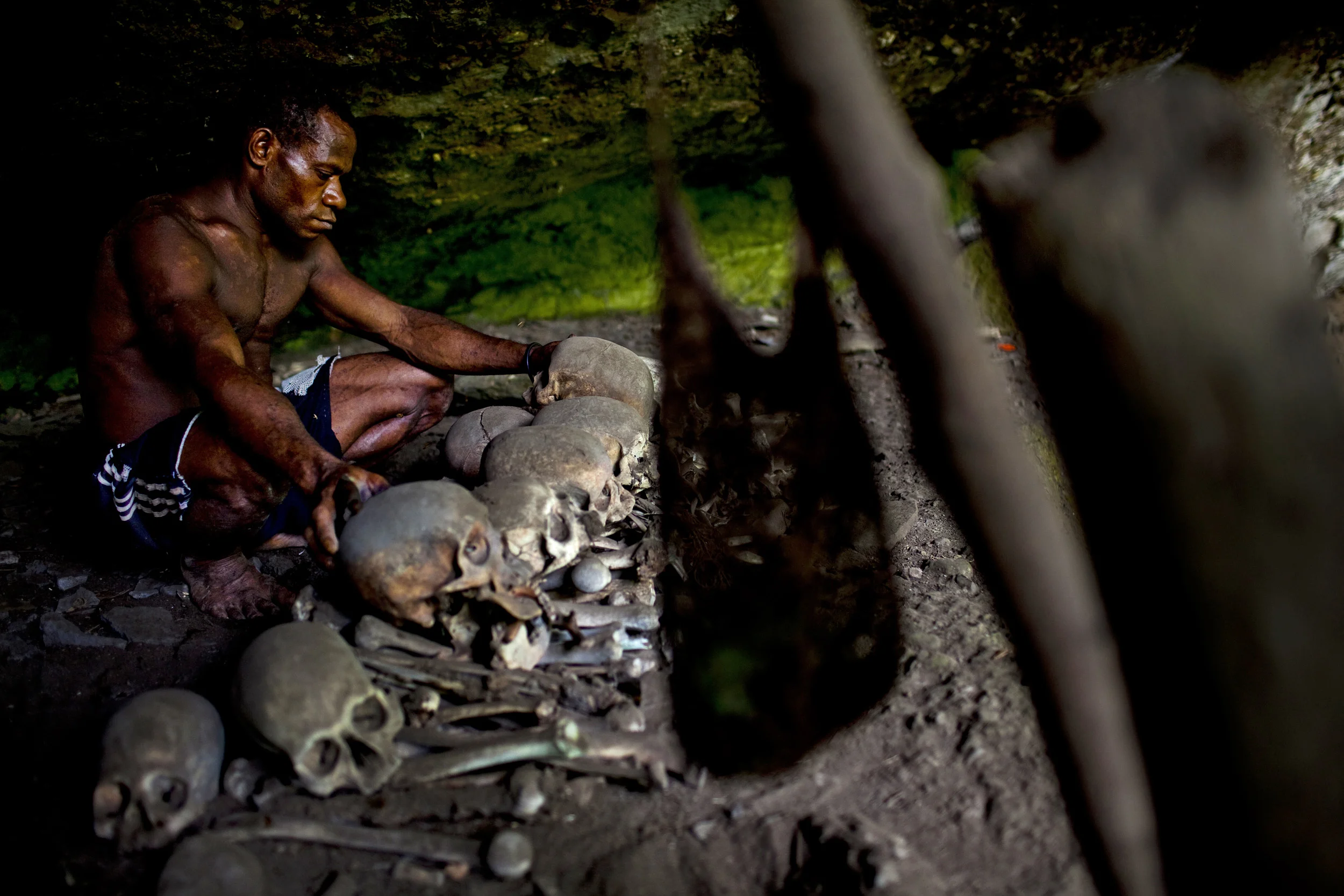
MIDDLE SEPIK, PAPUA NEW GUINEA-DECEMBER 2008: A man prays christiian prayers after a pilgrimage to the forest cave home of his ancestors, the Karawari people of the middle Sepik river, 15 December 2008. The Karawari are the most remote of the floodplains people, with many villages along the river barely a generation old. The most recent settlements date only from 1996. Christian missionaries have brought profound change to this region in a short space of time and many of the villagers are now practising christians who have changed a great many tradtional ways in a very short space of time to fit in with their new found beliefs.(Photo by Brent Stirton/Reportage by Getty Images.)

MIDDLE SEPIK, PAPUA NEW GUINEA-DECEMBER 2008: Images of the Karawari people of the middle Sepik river, 15 December 2008. The Karawari are the most remote of the floodplains people, with many vllages along the river barely a generation old. The most recent settlements date only from 1996. (Photo by Brent Stirton/Reportage by Getty Images.)

MIDDLE SEPIK, PAPUA NEW GUINEA-DECEMBER 2008: Images of the Karawari people of the middle Sepik river, 15 December 2008. The Karawari are the most remote of the floodplains people, with many vllages along the river barely a generation old. The most recent settlements date only from 1996. (Photo by Brent Stirton/Reportage by Getty Images.)

PUKAPUKI, PAPUA NEW GUINEA, AUGUST 2004: A local man showers underneath a waterfall in the rainforest close to his village in the mountains of Papua New Guinea. Traditional ways of life are under threat in Papua as villages have very little means of raising money through which to educate their children and pay medical bills. Traditional ways of life are based on sustainable farming and hunting practise. As Papuans move towards a more western lifestyle and the government attempts to raise capital for modernisation, villages are selling their natural resources such as the timber of the rainforest. This is a non-sustainable practise at this point and is having a devastating effect on water supply, traditional river routes and erosion patterns. Education as to these factors is a vital but lacking components in this transition period for Papua New Guinea. PHOTO BY BRENT STIRTON/GETTY IMAGES

MIDDLE SEPIK, PAPUA NEW GUINEA-DECEMBER 2008: Images of the Karawari people of the middle Sepik river, 15 December 2008. The Karawari are the most remote of the floodplains people, with many vllages along the river barely a generation old. The most recent settlements date only from 1996. (Photo by Brent Stirton/Reportage by Getty Images.)

LAKE MURRAY, WESTERN PROVINCE, PAPUA NEW GUINEA-DECEMBER 2008: Kuni tribe member Galeva Sep is a human rights and environmental activist in his home area of Lake Murray, Papua New Guinea, 28 December 2008. Sep is a former Forensic detective who operated out of the capital city Port Morseby for 15 years. He shares his life with international NGO's, the media and the traditional settings of his home in Lake Murray in the remote Western Province of Lake Murray. Sep has a unifying vision for the future. After deciding to leave his police work to focus on his community he succesfully led a campaign against Malaysian logging giant Concord Pacific to stop illegal logging and gross exploitation of locals by the Malaysians. Sep then created, along with the help of Greenpeace, an eco-forestry project to benefit the local people of Lake Murray to whom the forest traditionally belongs. Sep believes that community based ecologically sustainable projects are the key to the current issues facing many Papua New Guineans. In that vein small sustainable eco-milling projects are rolling out in Lake Murray. These consist of 6 man teams who log by demand only. The mill is portable and a specific tree is chosen, felled, then the small mill constructed around it. There is thus no damage from roads and heavy machinery and only specific trees are targetted thus making for a sustainable venture with all proceeds going to local communities rather than to foreign bodies. The primary motivations of the community loggers is to raise sufficent funds to educate their children and to pay medical costs if the need arises. Lake Murray is a region where people have lived lives in harmony with nature for centuries. People make their living by hunting, farming, fishing, and growing rubber trees and now also with Eco-forestry. Their life-styles are dependant on the harmony between them and nature and they are trying to ensure a sustainable relationship for future generations. (Photo by Brent Stirton/Repo
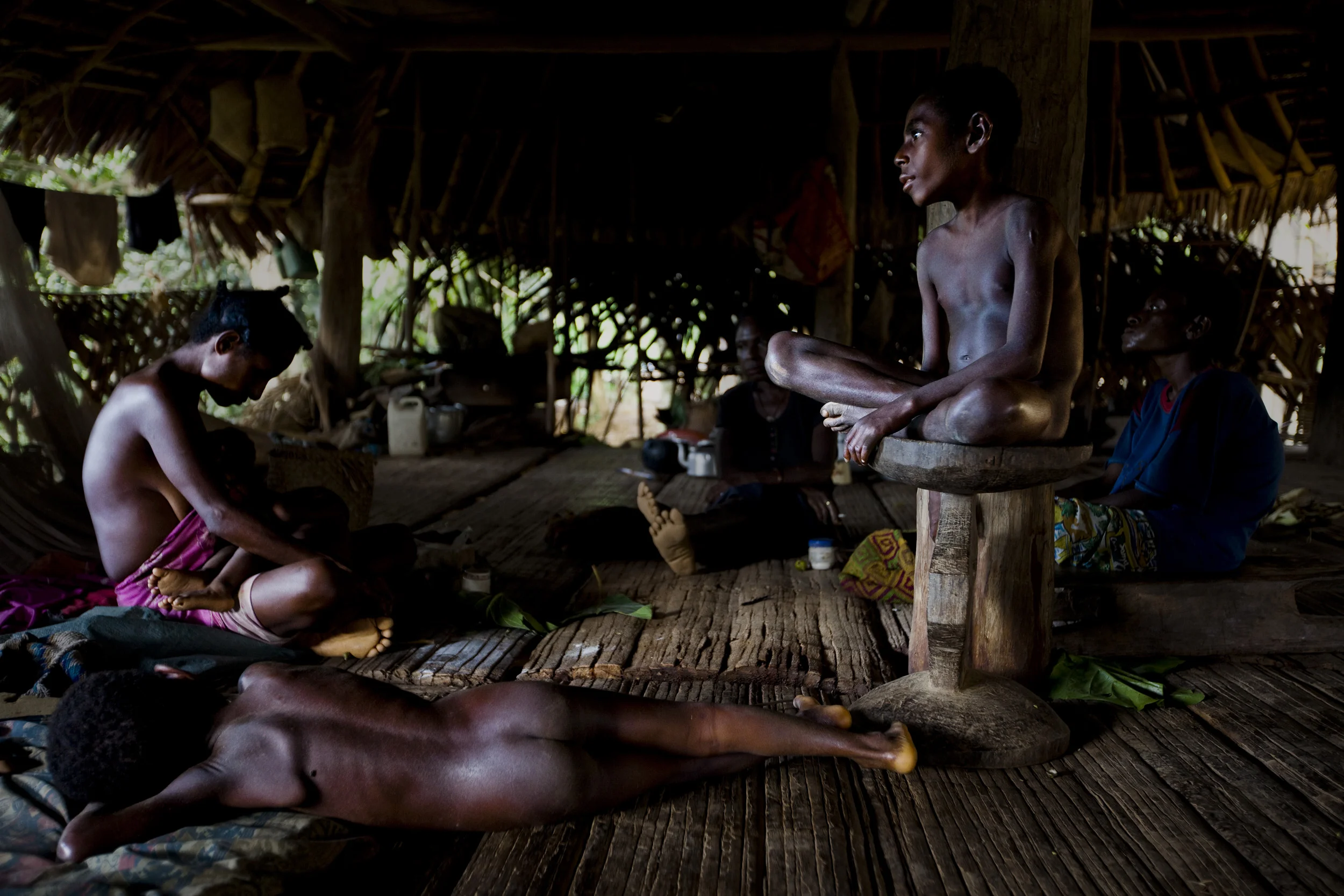
MIDDLE SEPIK, PAPUA NEW GUINEA-DECEMBER 2008: The interior of a family hut in a Karawari village of the middle Sepik river, 15 December 2008. The Karawari are the most remote of the floodplains people, with many vllages along the river barely a generation old. The most recent settlements date only from 1996. (Photo by Brent Stirton/Reportage by Getty Images.)

MIDDLE SEPIK, PAPUA NEW GUINEA-DECEMBER 2008: Images of the Karawari people of the middle Sepik river, 15 December 2008. The Karawari are the most remote of the floodplains people, with many vllages along the river barely a generation old. The most recent settlements date only from 1996. (Photo by Brent Stirton/Reportage by Getty Images.)
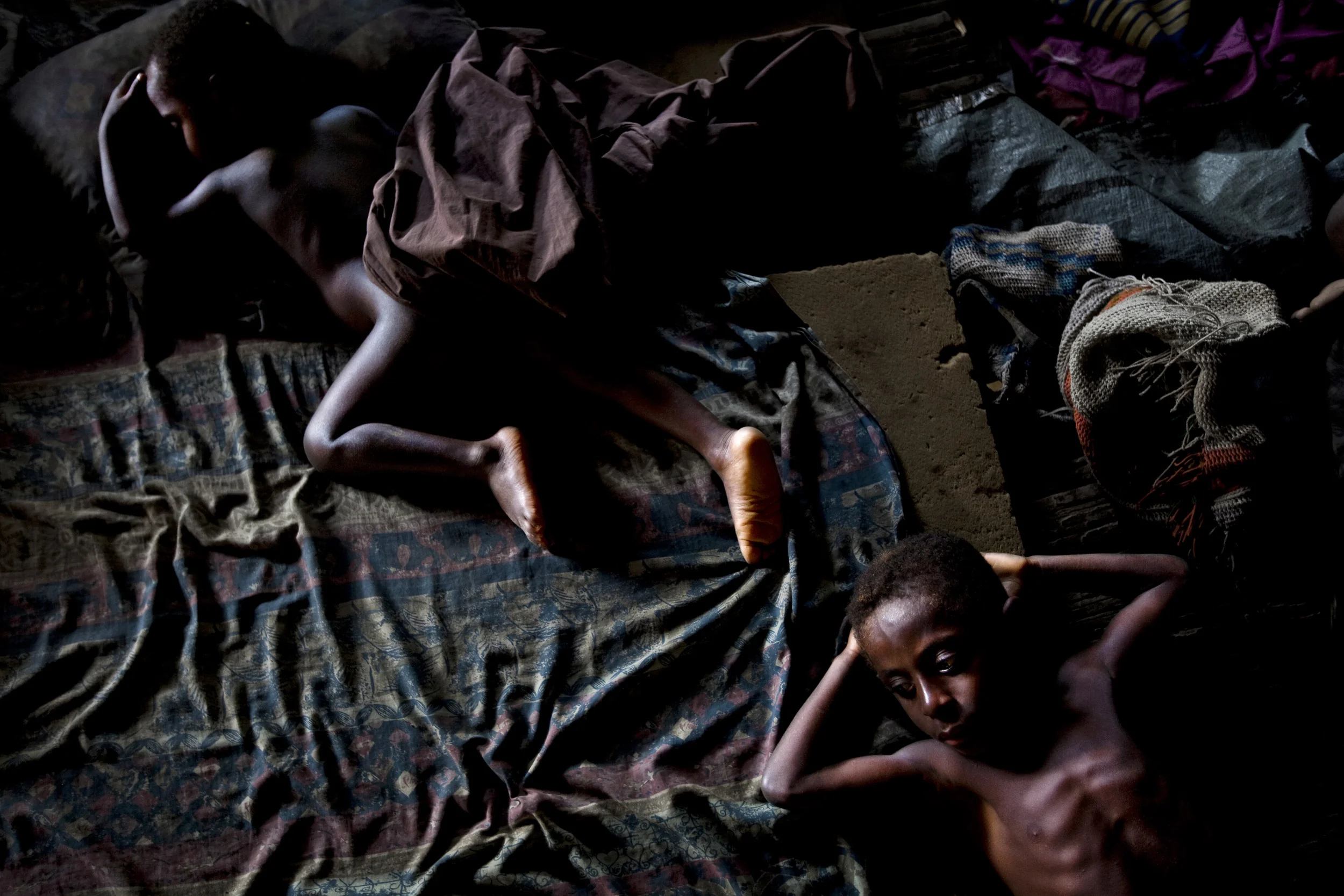
MIDDLE SEPIK, PAPUA NEW GUINEA-DECEMBER 2008: Images of the Karawari people of the middle Sepik river, 15 December 2008. The Karawari are the most remote of the floodplains people, with many vllages along the river barely a generation old. The most recent settlements date only from 1996. (Photo by Brent Stirton/Reportage by Getty Images.)

MIDDLE SEPIK, PAPUA NEW GUINEA-DECEMBER 2008: Images of the Karawari people of the middle Sepik river, 15 December 2008. The Karawari are the most remote of the floodplains people, with many vllages along the river barely a generation old. The most recent settlements date only from 1996. (Photo by Brent Stirton/Reportage by Getty Images.)

SEPIK RIVER BASIN, PAPUA NEW GUINEA, JANUARY 2009: A mother washes her children in the Sepik river at the end of the day. (Photo by Brent Stirton/Reportage by Getty Images.)

FLY RIVER REGION, PAPUA NEW GUINEA, AUGUST 2006: Images of local fishermen living along the Fly River, a remote region of Papua New Guinea where life-style is still derived almost entirely from man's relationship to the natural world, 27 August 2006. (Photo by Brent Stirton/Reportage by Getty Images.)
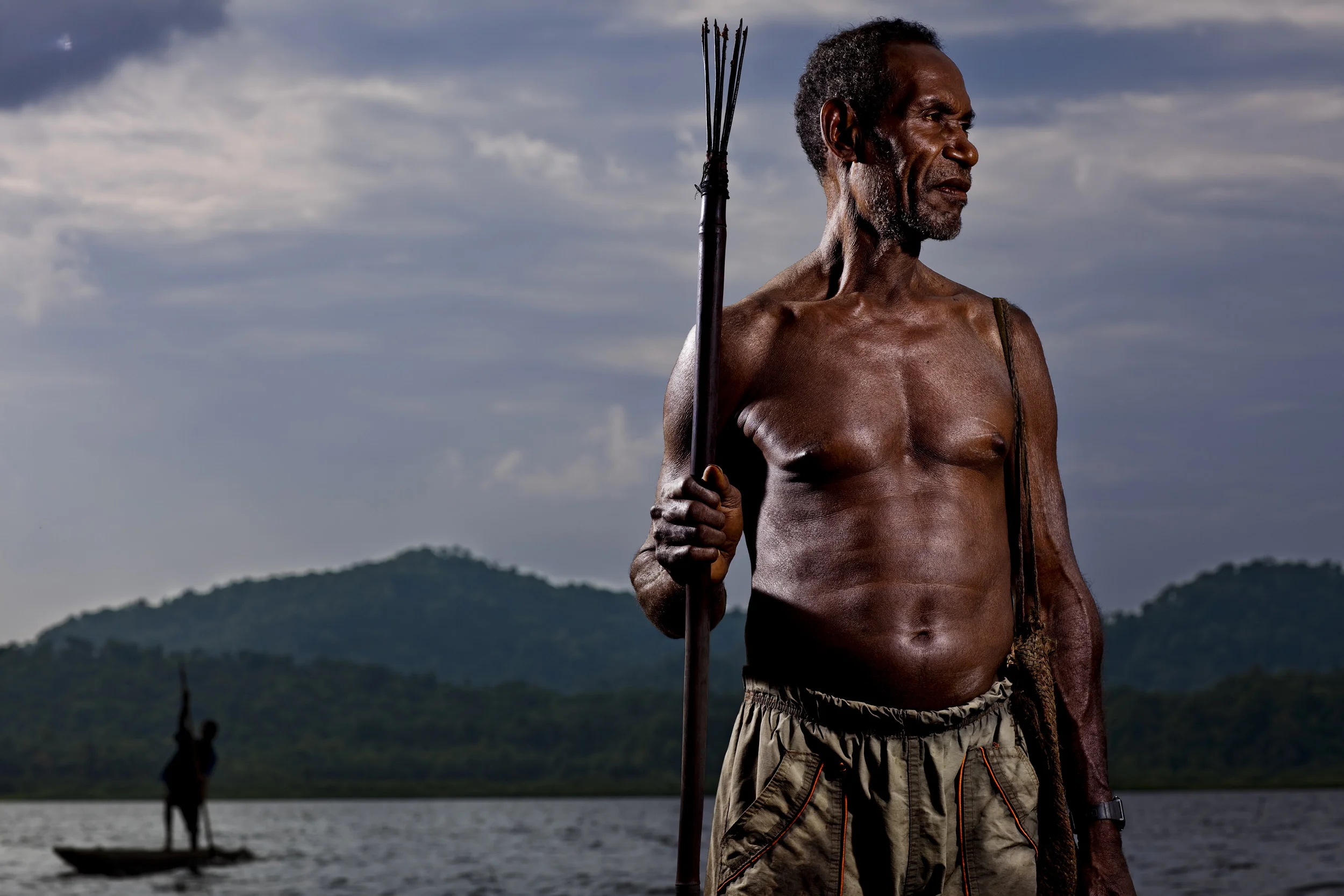
MIDDLE SEPIK, PAPUA NEW GUINEA-DECEMBER 2008: Images of the Karawari people of the middle Sepik river, 15 December 2008. The Karawari are the most remote of the floodplains people, with many vllages along the river barely a generation old. The most recent settlements date only from 1996. (Photo by Brent Stirton/Reportage by Getty Images.)
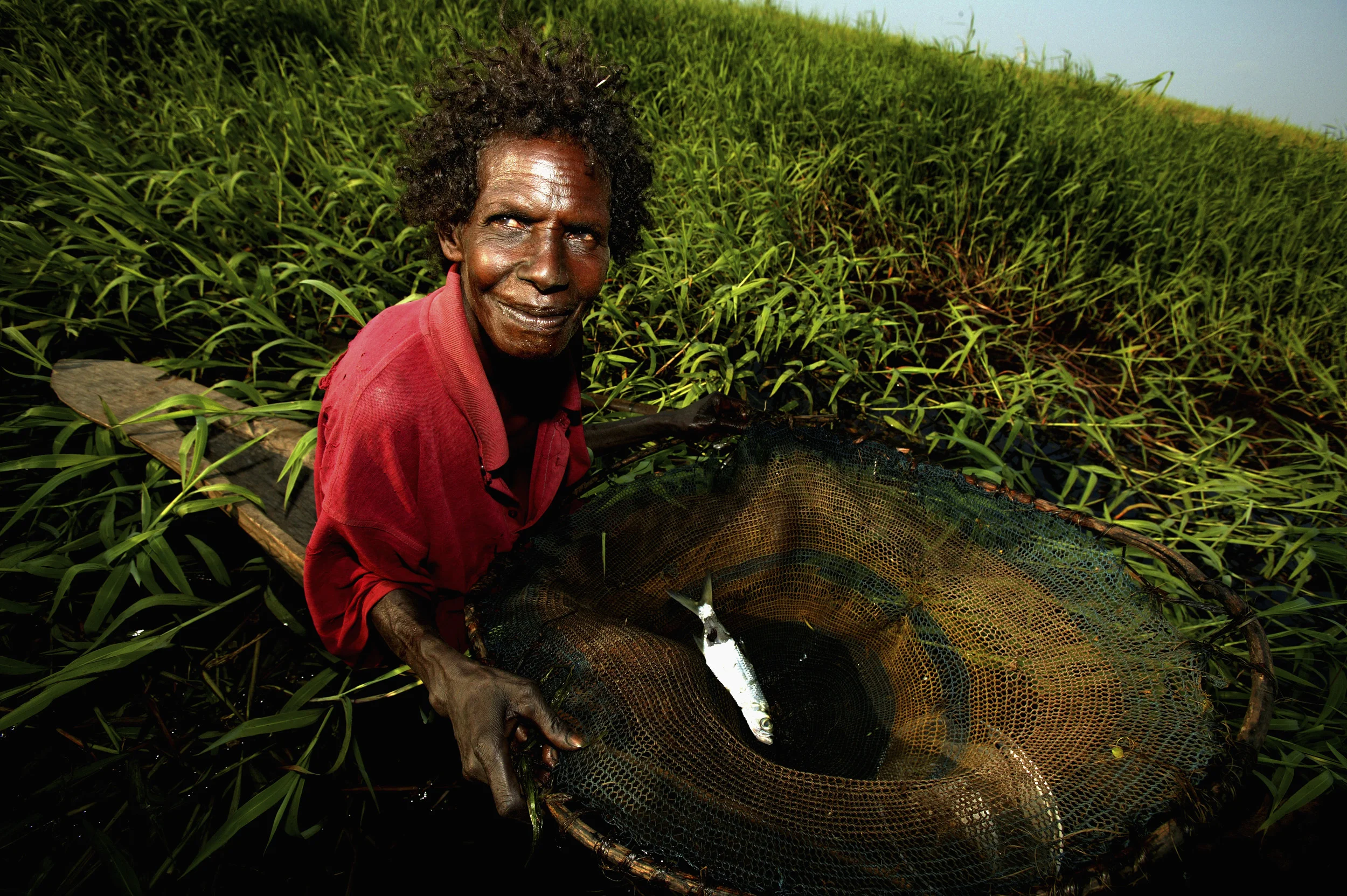
FLY RIVER REGION, PAPUA NEW GUINEA, AUGUST 2006: An old woman fishes along the Fly River, a remote region of Papua New Guinea where life-style is still derived almost entirely from man's relationship to the natural world, 27 August 2006. (Photo by Brent Stirton/Reportage by Getty Images.)

FLY RIVER REGION, PAPUA NEW GUINEA, AUGUST 2006: A local woman carries pieces of Sago Palm in a basket on her way to a village along the Fly River, a remote region of Papua New Guinea where life-style is still derived almost entirely from man's relationship to the natural world, 27 August 2006. Sago is the staple diet of most Papua New Guinean people and is derived from the Sago Palm tree. The women of the tribe extract the inner part of the Sago palm and then reduce it to a form which can be backed or fried into a coarse bread. (Photo by Brent Stirton/Reportage by Getty Images.)
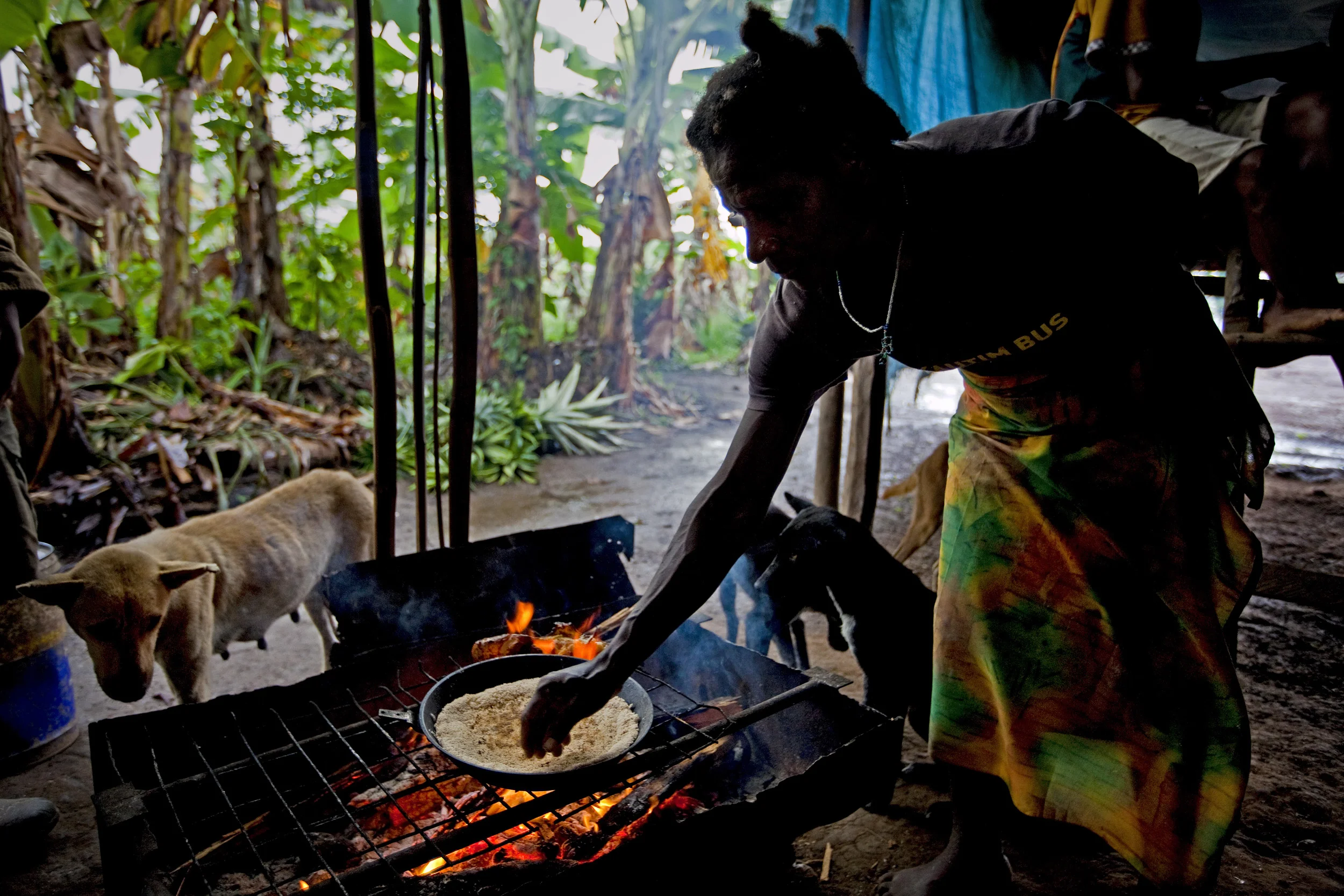
LAKE MURRAY, WESTERN PROVINCE, PAPUA NEW GUINEA-JANUARY 2008: Scenes of community life in Kubut Village, Lake Murray, Papua New Guinea, 1 January 2009. Lake Murray is a region where people have lived lives in harmony with nature for centuries. People make their living by hunting, farming, fishing, and growing rubber trees and now also with Eco-forestry. Their life-styles are dependant on the harmony between them and nature and they are trying to ensure a sustainable relationship for future generations. This has been complicated and compromised by the interventions of both international mining and logging groups over the last few decades but local community resistance is growing as rising anger mounts at the environmental damage done to rivers and forests which form the backbone of the village survival system. (Photo by Brent Stirton/Reportage by Getty Images.)
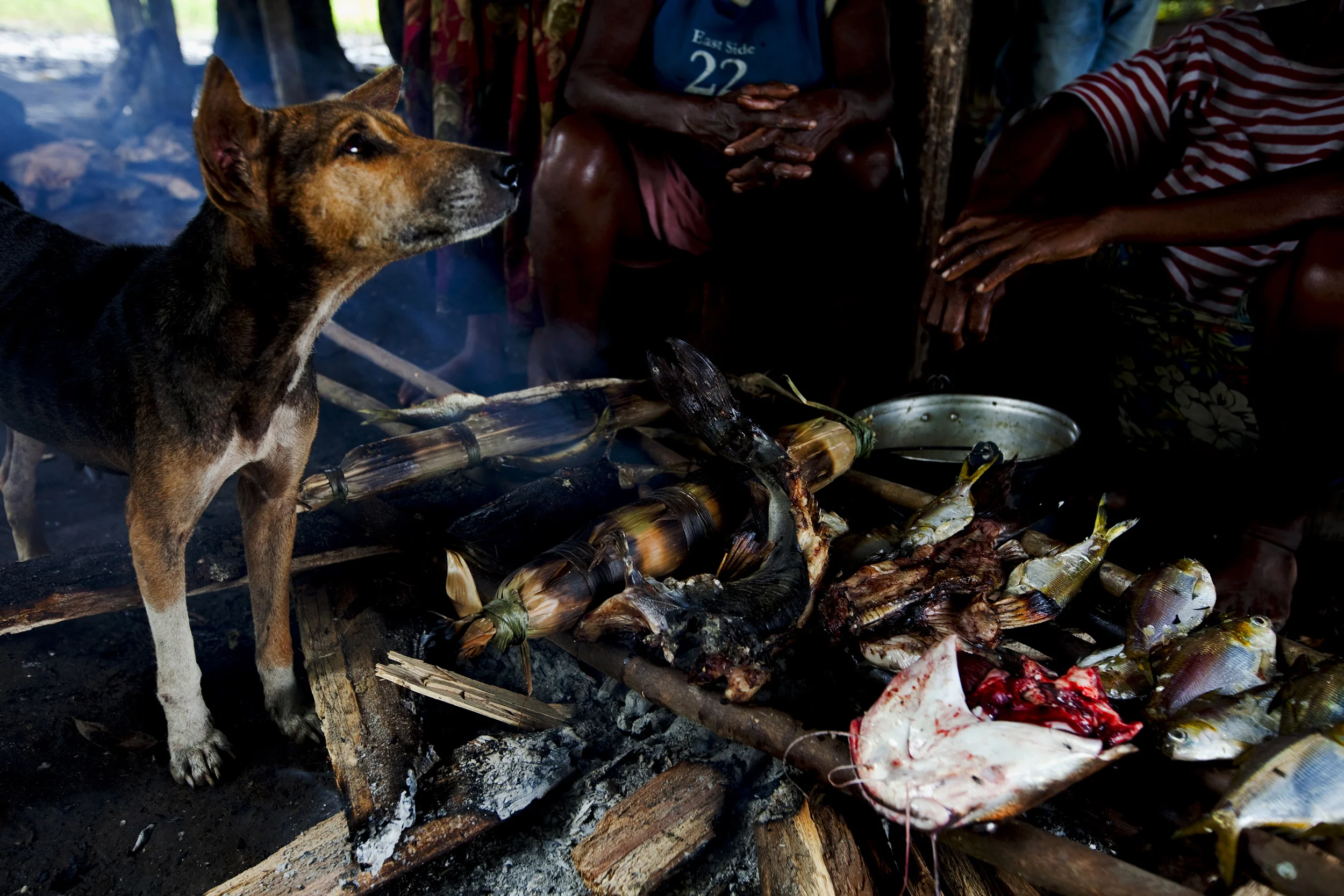
LAKE MURRAY, WESTERN PROVINCE, PAPUA NEW GUINEA-JANUARY 2008: Scenes of community life in Kubut Village, Lake Murray, Papua New Guinea, 1 January 2009. Lake Murray is a region where people have lived lives in harmony with nature for centuries. People make their living by hunting, farming, fishing, and growing rubber trees and now also with Eco-forestry. Their life-styles are dependant on the harmony between them and nature and they are trying to ensure a sustainable relationship for future generations. This has been complicated and compromised by the interventions of both international mining and logging groups over the last few decades but local community resistance is growing as rising anger mounts at the environmental damage done to rivers and forests which form the backbone of the village survival system. (Photo by Brent Stirton/Reportage by Getty Images.)

LAKE MURRAY, WESTERN PROVINCE, PAPUA NEW GUINEA-JANUARY 2008: Crocodiles captured on the lake are killed and skinned for sale and consumption, Lake Murray, Papua New Guinea, 1 January 2009. Lake Murray is a region where people have lived lives in harmony with nature for centuries. People make their living by hunting, farming, fishing, and growing rubber trees and now also with Eco-forestry. Their life-styles are dependant on the harmony between them and nature and they are trying to ensure a sustainable relationship for future generations. This has been complicated and compromised by the interventions of both international mining and logging groups over the last few decades but local community resistance is growing as rising anger mounts at the environmental damage done to rivers and forests which form the backbone of the village survival system. (Photo by Brent Stirton/Reportage by Getty Images.)
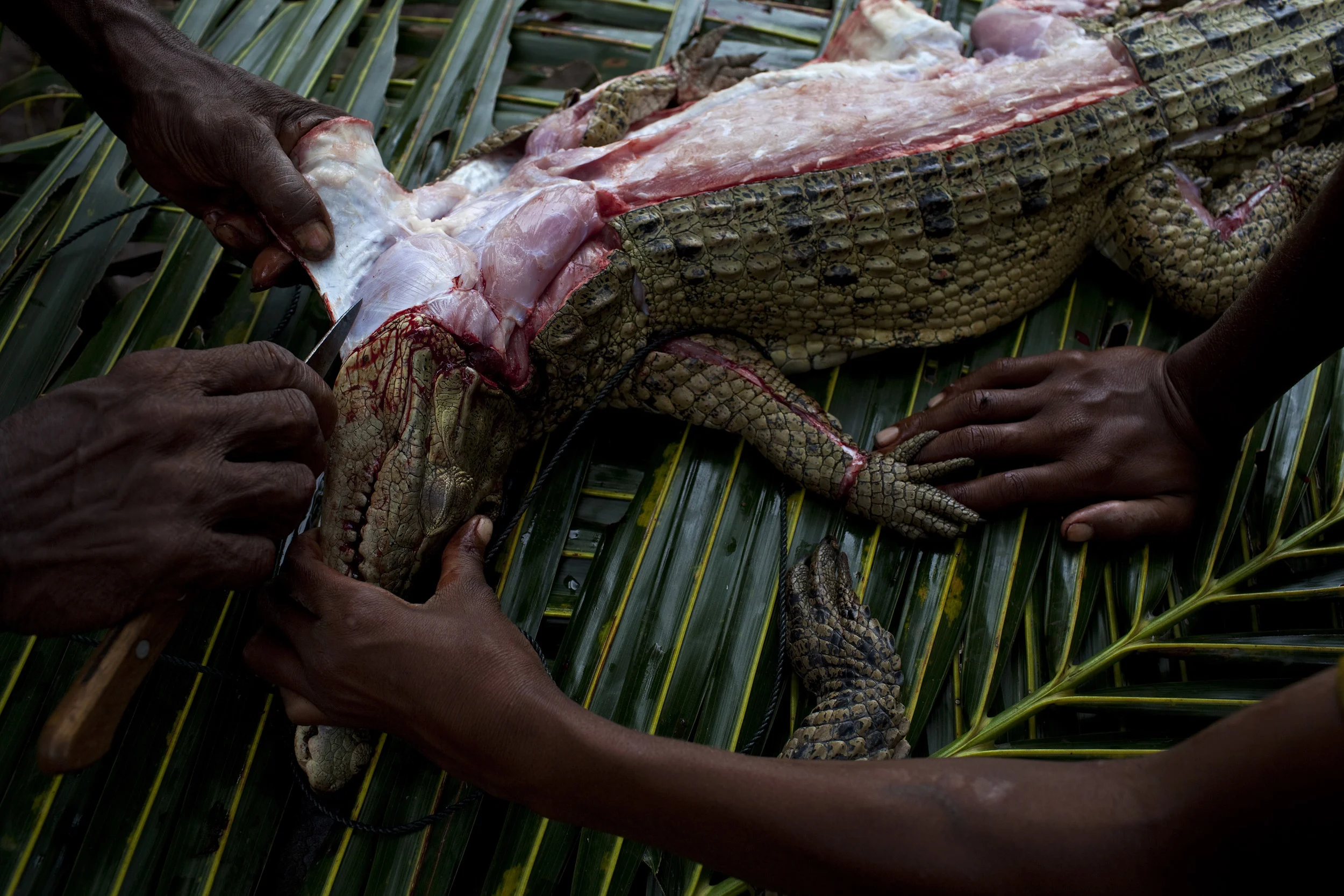
LAKE MURRAY, WESTERN PROVINCE, PAPUA NEW GUINEA-JANUARY 2008: Crocodiles captured on the lake are killed and skinned for sale and consumption, Lake Murray, Papua New Guinea, 1 January 2009. Lake Murray is a region where people have lived lives in harmony with nature for centuries. People make their living by hunting, farming, fishing, and growing rubber trees and now also with Eco-forestry. Their life-styles are dependant on the harmony between them and nature and they are trying to ensure a sustainable relationship for future generations. This has been complicated and compromised by the interventions of both international mining and logging groups over the last few decades but local community resistance is growing as rising anger mounts at the environmental damage done to rivers and forests which form the backbone of the village survival system. (Photo by Brent Stirton/Reportage by Getty Images.)

MIDDLE SEPIK, PAPUA NEW GUINEA-DECEMBER 2008: Images of the Karawari people of the middle Sepik river, 15 December 2008. The Karawari are the most remote of the floodplains people, with many vllages along the river barely a generation old. The most recent settlements date only from 1996. (Photo by Brent Stirton/Reportage by Getty Images.)

LAKE MURRAY, WESTERN PROVINCE, PAPUA NEW GUINEA-JANUARY 2008: Galeva Sep, a former policeman turned environmental activist photographed at Kubut Village, Lake Murray, Papua New Guinea, 1 January 2009. Sep organised his community to expel exploitative Malaysian loggers and now runs his own eco-logging practise. Lake Murray is a region where people have lived lives in harmony with nature for centuries. People make their living by hunting, farming, fishing, and growing rubber trees and now also with Eco-forestry. Their life-styles are dependant on the harmony between them and nature and they are trying to ensure a sustainable relationship for future generations. This has been complicated and compromised by the interventions of both international mining and logging groups over the last few decades but local community resistance is growing as rising anger mounts at the environmental damage done to rivers and forests which form the backbone of the village survival system. (Photo by Brent Stirton/Reportage by Getty Images.)
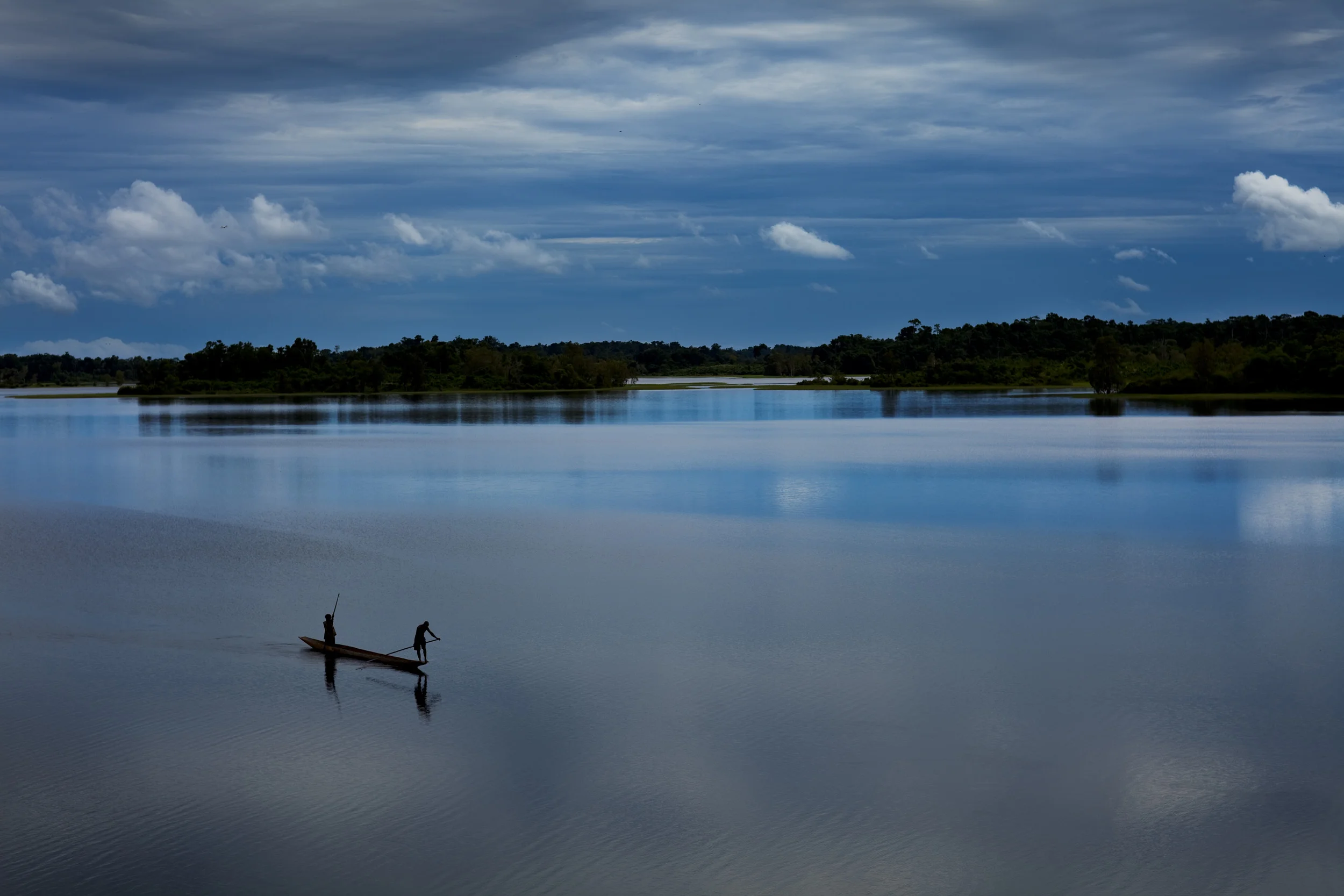
LAKE MURRAY, WESTERN PROVINCE, PAPUA NEW GUINEA-JANUARY 2008: Scenes of community life in Kubut Village, Lake Murray, Papua New Guinea, 1 January 2009. Lake Murray is a region where people have lived lives in harmony with nature for centuries. People make their living by hunting, farming, fishing, and growing rubber trees and now also with Eco-forestry. Their life-styles are dependant on the harmony between them and nature and they are trying to ensure a sustainable relationship for future generations. This has been complicated and compromised by the interventions of both international mining and logging groups over the last few decades but local community resistance is growing as rising anger mounts at the environmental damage done to rivers and forests which form the backbone of the village survival system. (Photo by Brent Stirton/Reportage by Getty Images.)

LAKE MURRAY, WESTERN PROVINCE, PAPUA NEW GUINEA-JANUARY 2008: Scenes of kids enjoying the lake in Kubut Village, Lake Murray, Papua New Guinea, 1 January 2009. Lake Murray is a region where people have lived lives in harmony with nature for centuries. People make their living by hunting, farming, fishing, and growing rubber trees and now also with Eco-forestry. Their life-styles are dependant on the harmony between them and nature and they are trying to ensure a sustainable relationship for future generations. This has been complicated and compromised by the interventions of both international mining and logging groups over the last few decades but local community resistance is growing as rising anger mounts at the environmental damage done to rivers and forests which form the backbone of the village survival system. (Photo by Brent Stirton/Reportage by Getty Images.)

LAKE MURRAY, WESTERN PROVINCE, PAPUA NEW GUINEA-JANUARY 2008: Boys play touch rugby in Kubut Village, Lake Murray, Papua New Guinea, 1 January 2009. Lake Murray is a region where people have lived lives in harmony with nature for centuries. People make their living by hunting, farming, fishing, and growing rubber trees and now also with Eco-forestry. Their life-styles are dependant on the harmony between them and nature and they are trying to ensure a sustainable relationship for future generations. This has been complicated and compromised by the interventions of both international mining and logging groups over the last few decades but local community resistance is growing as rising anger mounts at the environmental damage done to rivers and forests which form the backbone of the village survival system. (Photo by Brent Stirton/Reportage by Getty Images.)LAKE MURRAY, WESTERN PROVINCE, PAPUA NEW GUINEA-JANUARY 2008: Scenes of community life in Kubut Village, Lake Murray, Papua New Guinea, 1 January 2009. Lake Murray is a region where people have lived lives in harmony with nature for centuries. People make their living by hunting, farming, fishing, and growing rubber trees and now also with Eco-forestry. Their life-styles are dependant on the harmony between them and nature and they are trying to ensure a sustainable relationship for future generations. This has been complicated and compromised by the interventions of both international mining and logging groups over the last few decades but local community resistance is growing as rising anger mounts at the environmental damage done to rivers and forests which form the backbone of the village survival system. (Photo by Brent Stirton/Reportage by Getty Images.)LAKE MURRAY, WESTERN PROVINCE, PAPUA NEW GUINEA-JANUARY 2008: Scenes of community life in Kubut Village, Lake Murray, Papua New Guinea, 1 January 2009. Lake Murray is a region where people have lived lives in harmony with nature for centuries. People make t

LAKE MURRAY, WESTERN PROVINCE, PAPUA NEW GUINEA-JANUARY 2008: Eco-logging practised by a small group of men who cut only to order and bring a small portable mill to the tree itself rather than operate with destructive large scale traditional logging techniques, Lake Murray, Papua New Guinea, 1 January 2009. Lake Murray is a region where people have lived lives in harmony with nature for centuries. People make their living by hunting, farming, fishing, and growing rubber trees and now also with Eco-forestry. Their life-styles are dependant on the harmony between them and nature and they are trying to ensure a sustainable relationship for future generations. This has been complicated and compromised by the interventions of both international mining and logging groups over the last few decades but local community resistance is growing as rising anger mounts at the environmental damage done to rivers and forests which form the backbone of the village survival system. (Photo by Brent Stirton/Reportage by Getty Images.)

LAKE MURRAY, WESTERN PROVINCE, PAPUA NEW GUINEA-JANUARY 2008: Eco-logging practised by a small group of men who cut only to order and bring a small portable mill to the tree itself rather than operate with destructive large scale traditional logging techniques, Lake Murray, Papua New Guinea, 1 January 2009. Lake Murray is a region where people have lived lives in harmony with nature for centuries. People make their living by hunting, farming, fishing, and growing rubber trees and now also with Eco-forestry. Their life-styles are dependant on the harmony between them and nature and they are trying to ensure a sustainable relationship for future generations. This has been complicated and compromised by the interventions of both international mining and logging groups over the last few decades but local community resistance is growing as rising anger mounts at the environmental damage done to rivers and forests which form the backbone of the village survival system. (Photo by Brent Stirton/Reportage by Getty Images.)

LAKE MURRAY, WESTERN PROVINCE, PAPUA NEW GUINEA-JANUARY 2008: Recycling in practise in Kubut Village, Lake Murray, Papua New Guinea, 1 January 2009. Lake Murray is a region where people have lived lives in harmony with nature for centuries. People make their living by hunting, farming, fishing, and growing rubber trees and now also with Eco-forestry. Their life-styles are dependant on the harmony between them and nature and they are trying to ensure a sustainable relationship for future generations. This has been complicated and compromised by the interventions of both international mining and logging groups over the last few decades but local community resistance is growing as rising anger mounts at the environmental damage done to rivers and forests which form the backbone of the village survival system. (Photo by Brent Stirton/Reportage by Getty Images.)
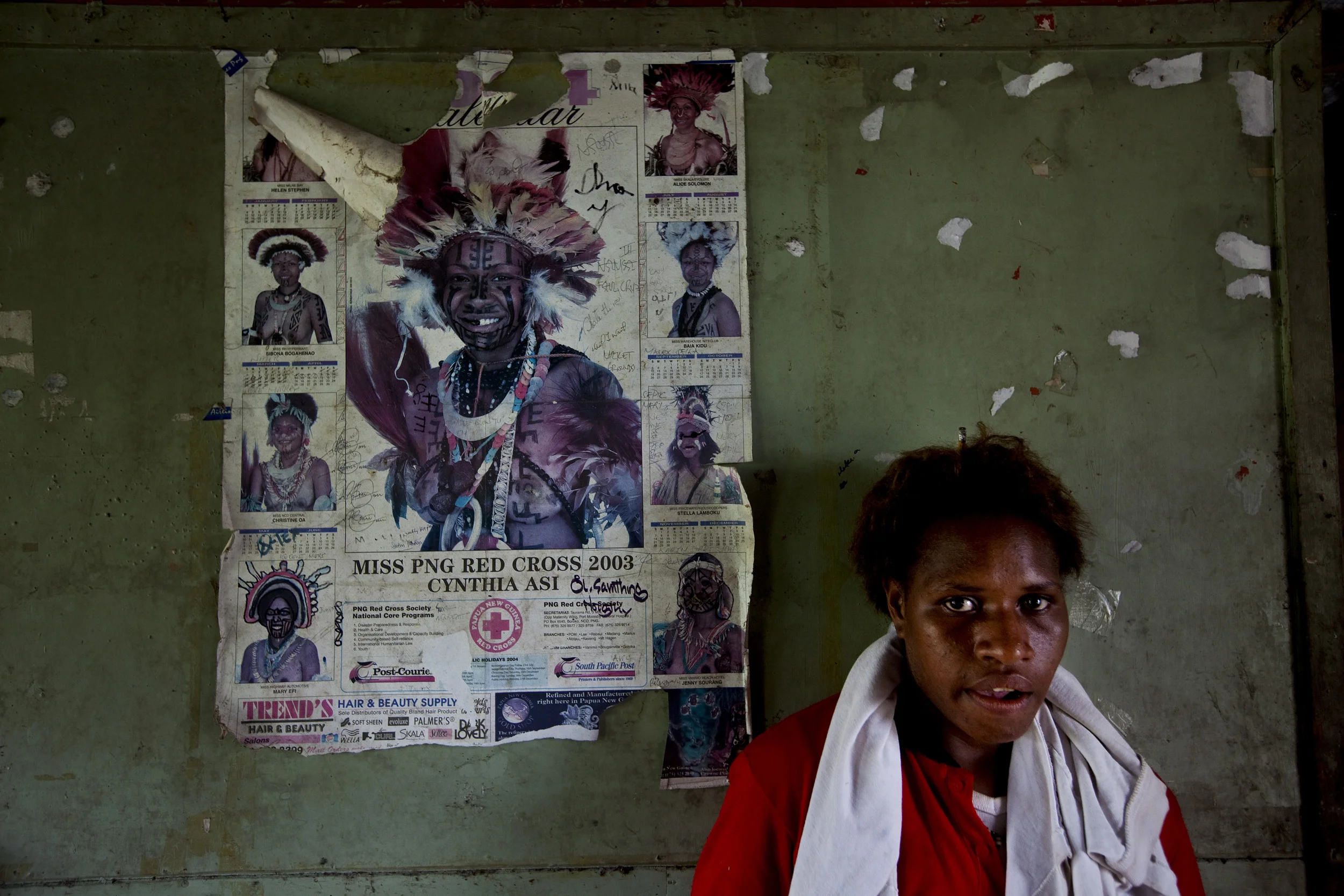
LAKE MURRAY, WESTERN PROVINCE, PAPUA NEW GUINEA-JANUARY 2008: A teenage girl in western clothes stands in her house next to an old poster advertising a Miss PNG contest sponsored by an NGO. All sense of personal identity has changed very quickly in PNG with the aid of the church and other western influences. The women in the poster is how beauty and identity in PNG were depicted 10 years ago, this is no longer how people see themselves yet they still have great pride in their tradtions. A desire for personal progress dominates the minds of most young Papua New Guineans but the funds and the education are lacking. Lake Murray is a region where people have lived lives in harmony with nature for centuries. People make their living by hunting, farming, fishing, and growing rubber trees and now also with Eco-forestry. Their life-styles are dependant on the harmony between them and nature and they are trying to ensure a sustainable relationship for future generations. This has been complicated and compromised by the interventions of both international mining and logging groups over the last few decades but local community resistance is growing as rising anger mounts at the environmental damage done to rivers and forests which form the backbone of the village survival system. (Photo by Brent Stirton/Reportage by Getty Images.)
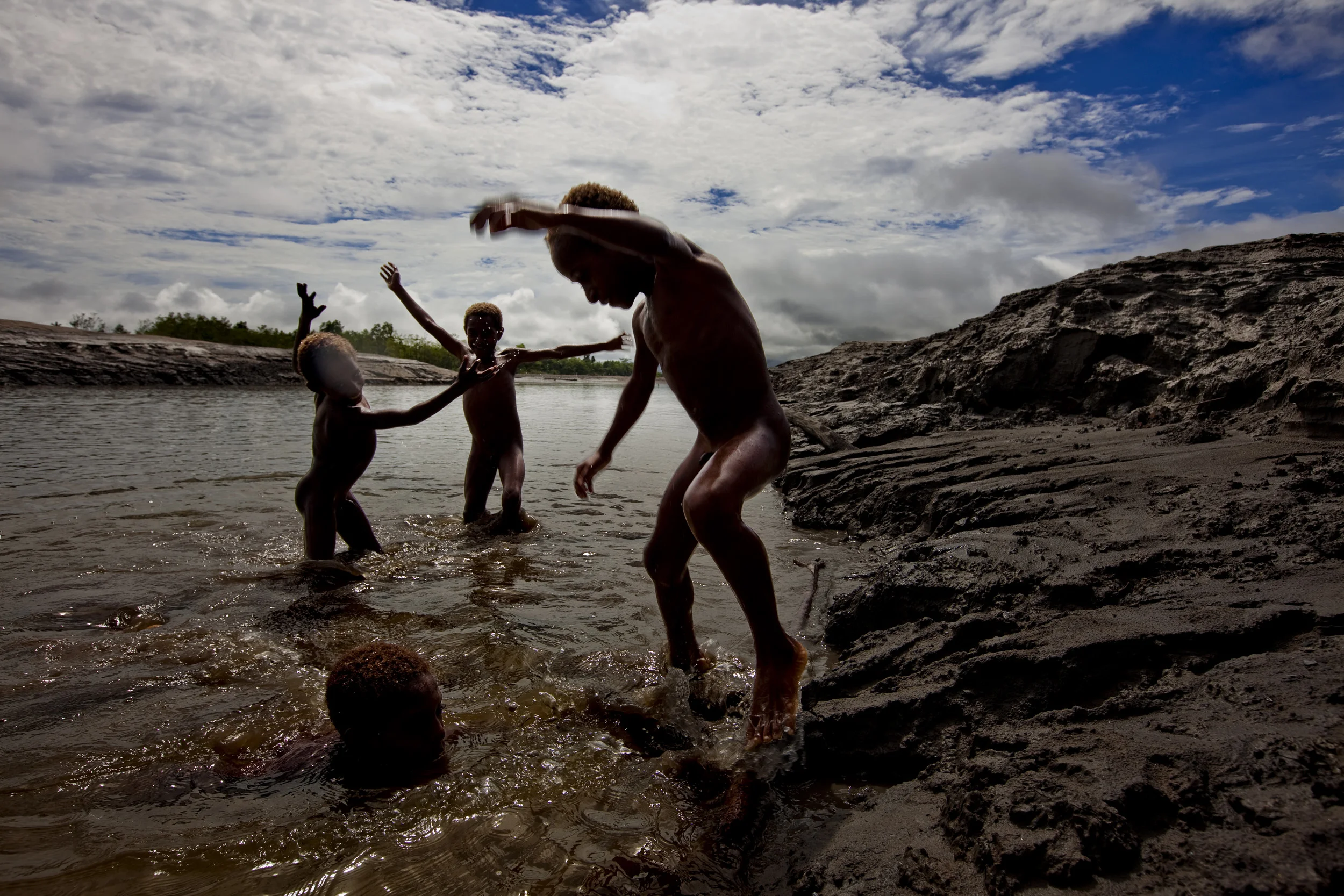
KIUNGA, WESTERN PROVINCE, PAPUA NEW GUINEA-JANUARY 2009: Images of local village children playing in the Ok Tedi river surrounded by banks of poisonous mine sediment which has been dumped into the Ok Tedi river by the mining process of Ok Tedi mine, Kiunga, Papua New Guinea, 4 January 2009. The mine sediment is the result of copper and gold mining and contains amongst other chemicals iron pyrites which are poisonous to the eco-system. These images are shot outside Dome village which is a village traditionally dependant on the natural world. People hunt and fish and grow gardens of vegetables one the river banks none of which survive because of the content of the mined sediment. The Ok Tedi river has also shrunken dramatically in places as the sediment has grown to massive proportions on the former banks. All the fertile soil of the river bank has vanished and people have no option but to bathe in a river which is slowly poisoning all around it. Scientists at a recent water conference in Brisbane Australia from 3 different institutes have all predicted a major disaster when a natural and inevitable flood washes the iron pyrites in the sediment throughout the Ok Tedi and Fly River basin. This is an area of more than 30 000 people, all of whom will have their natural livelihood affected by the disaster. Despite 2 major court battles the Ok Tedi mine has succeeded in undermining the local populations and caused the PNG government to pass recent legislation which makes them immune to further compensation and legal action and renders the local landowners impotent. Current compensation to village landowners is in the region of 40 Kina a year, around $15. In the event of a major flood and the ensuing ecological disaster local ecologists predict civil unrest as a result of this issue. (Photo by Brent Stirton/Reportage by Getty Images.)

TARI GAP, SOUTHERN HIGHLANDS, PAPUA NEW GUINEA-DECEMBER 2008: Huli tribesmen photographed at a road-building project, Tari Gap, Papua New Guinea, 17 December 2008. Tari is the home of the Huli tribe, the second largest tribe in PNG, this highlands province was once considered one of the most remote areas of the highland region of Papua New Guinea, the outside world has only really been felt in the last 20 years. Recent oil discoveries in the region are now changing it quickly. Education and the Church have also been a profound influence. Although men often still wear traditional headgear and some face-paint, ragged western clothing is the norm although combinations of the traditional wear and western clothing are common. (Photo by Brent Stirton/Reportage for Getty Images.)
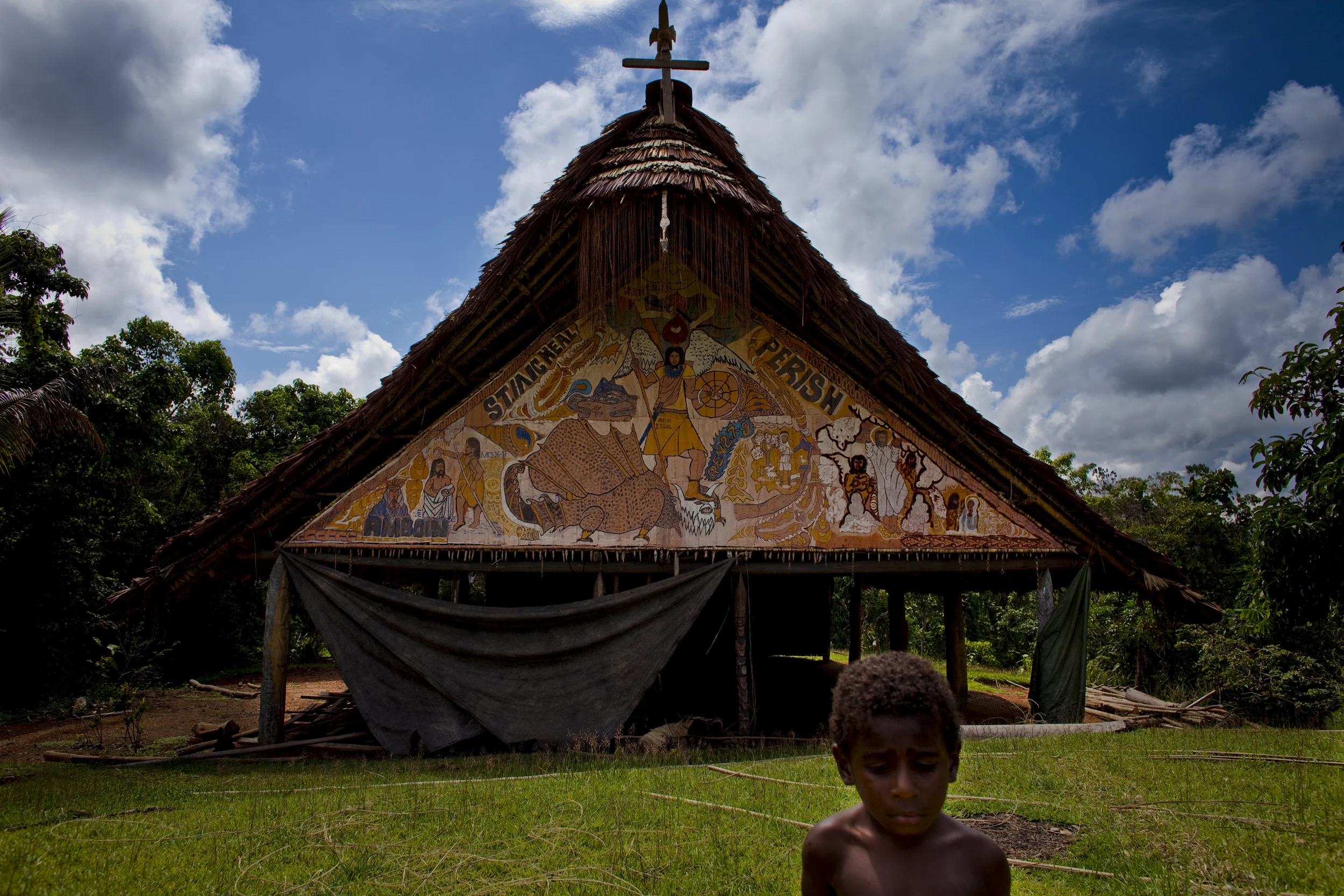
MIDDLE SEPIK, PAPUA NEW GUINEA-DECEMBER 2008: An image of a young boy standing by a newly erected Catholic church in a building which used to be the Spirit house of the Karawari people of this village in the middle Sepik river, 15 December 2008. The Karawari are the most remote of the floodplains people, with many villages along the river barely a generation old. The most recent settlements date only from 1996. Christian missionaries have brought profound change to this region in a short space of time and many of the villagers are now practising christians who have changed a great many tradtional ways in a very short space of time to fit in with their new found beliefs.(Photo by Brent Stirton/Reportage by Getty Images.)

TARI GAP, SOUTHERN HIGHLANDS, PAPUA NEW GUINEA-DECEMBER 2008: Huli Wigmen "Magic-Men" photographed at an ancestor skull cave, Tari Gap, Papua New Guinea, 17 December 2008. These "Magic-Men" keep the old tradition of ancestor protection alive, they maintain the skulls of men passed on and look after traditionally holy places. Both these men are supporters of the Catholic Church which they say is encouraging the both tradional ways and the ways of the Catholic church. Tari is the home of the Huli tribe, the second largest tribe in PNG, this highlands province was once considered one of the most remote areas of the highland region of Papua New Guinea, the outside world has only really been felt in the last 20 years. Recent oil discoveries in the region are now changing it quickly. Education and the Church have also been a profound influence. Although men often still wear traditional headgear and some face-paint, ragged western clothing is the norm although combinations of the traditional wear and western clothing are common. (Photo by Brent Stirton/Reportage for Getty Images.)

TARI GAP, SOUTHERN HIGHLANDS, PAPUA NEW GUINEA-DECEMBER 2008: Hela Huli Christian women photographed at a Catholic Church, Tari Gap, Papua New Guinea, 17 December 2008. These women are supporters of the Catholic Church which they say is encouraging both tradional ways and the ways of the Catholic church. Tari is the home of the Huli tribe, the second largest tribe in PNG, this highlands province was once considered one of the most remote areas of the highland region of Papua New Guinea, the outside world has only really been felt in the last 20 years. Recent oil discoveries in the region are now changing it quickly. Education and the Church have also been a profound influence. Although men often still wear traditional headgear and some face-paint, ragged western clothing is the norm although combinations of the traditional wear and western clothing are common. (Photo by Brent Stirton/Reportage for Getty Images.)
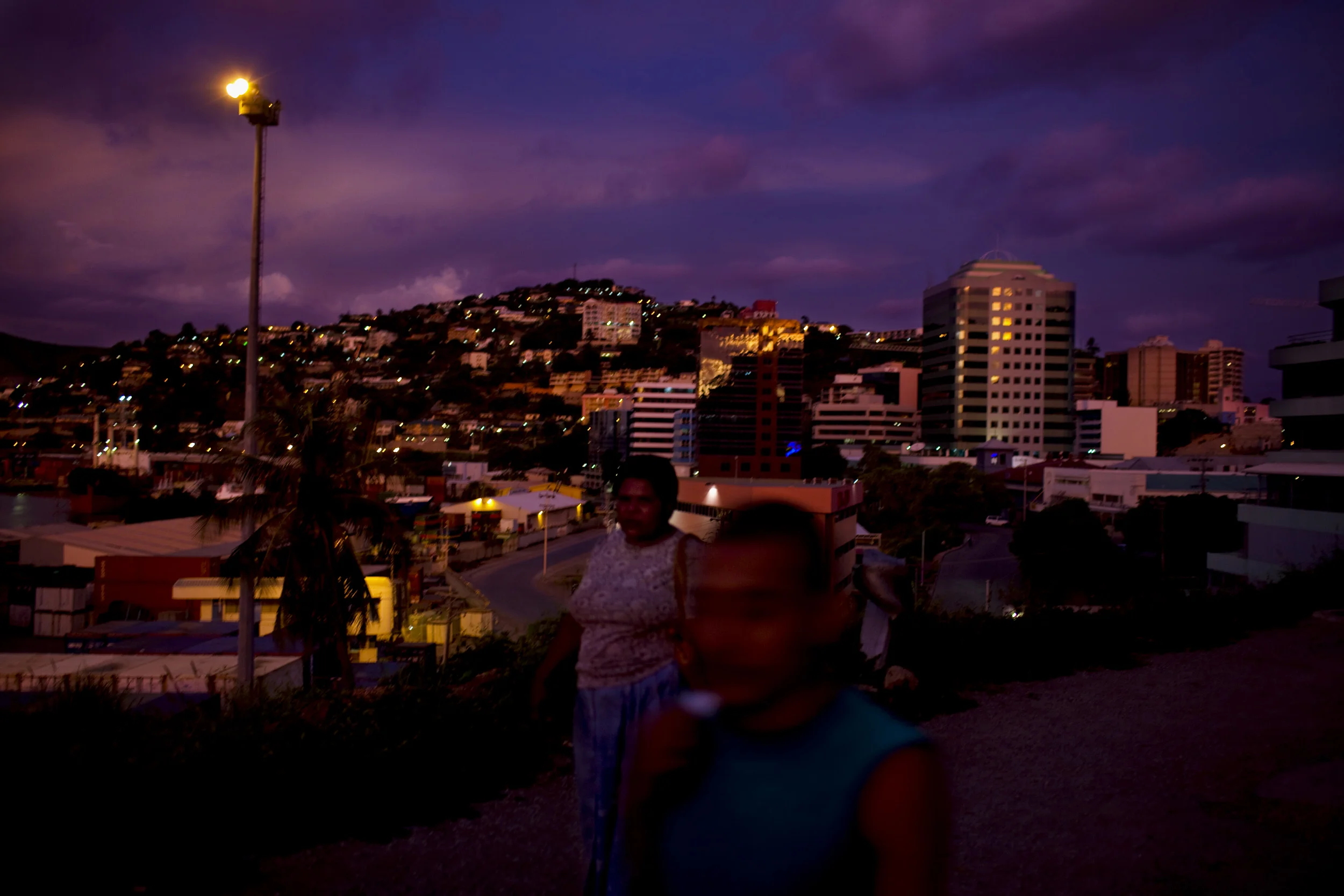
PORT MORSEBY, PAPUA NEW GUINEA-DECEMBER 2008: Scenes around Port Morseby, the capital city of Papua New Guinea, 25 December 2008. (Photo by Brent Stirton/Reportage by Getty Images.)
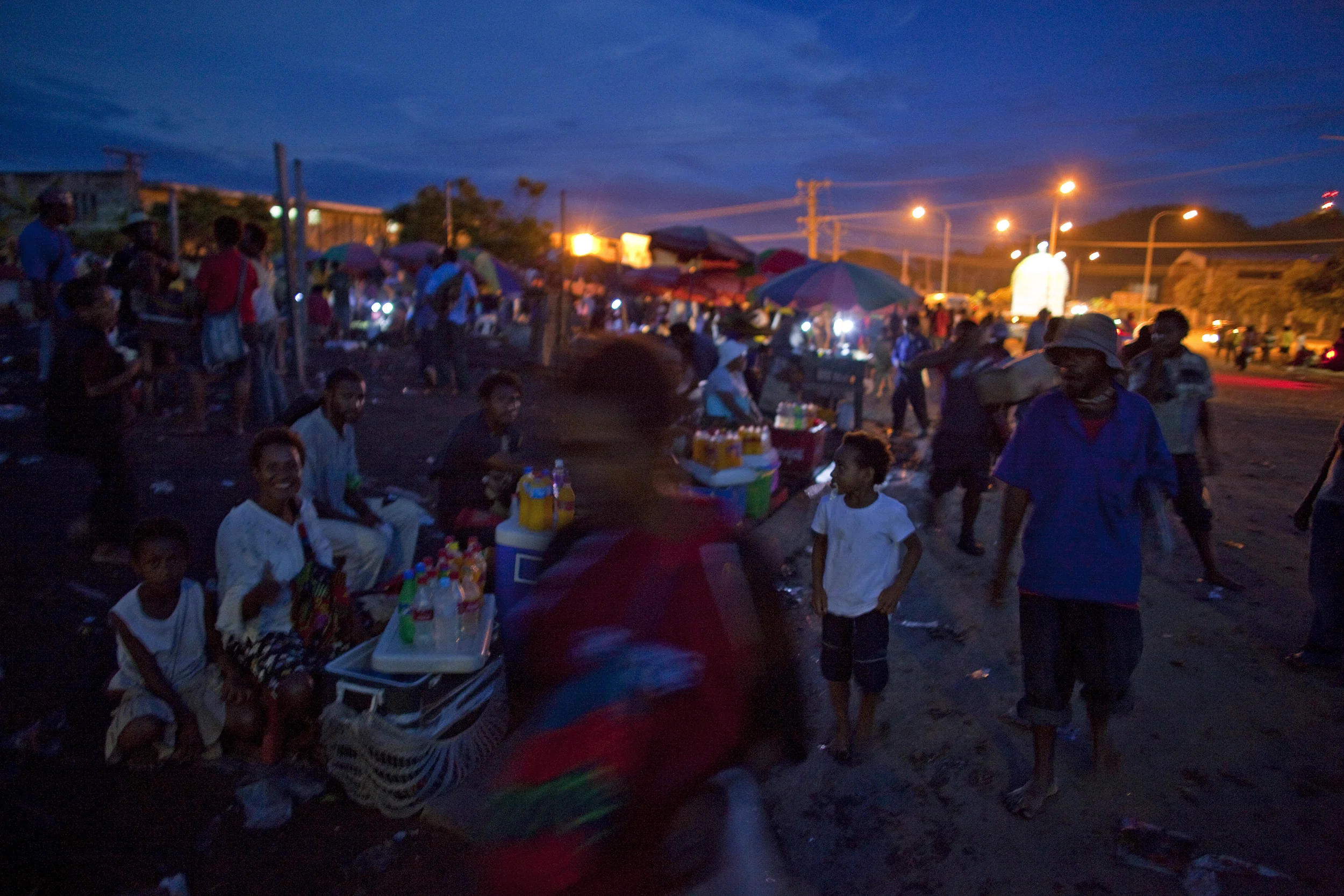
ERIMA SETTLEMENT, PORT MORSEBY, PAPUA NEW GUINEA-DECEMBER 2008:Scenes from poor settlement area Erima, Port Morseby, Papua New Guinea, 23 December 2008. (Photo by Brent Stirton/Reportage by Getty Images.)
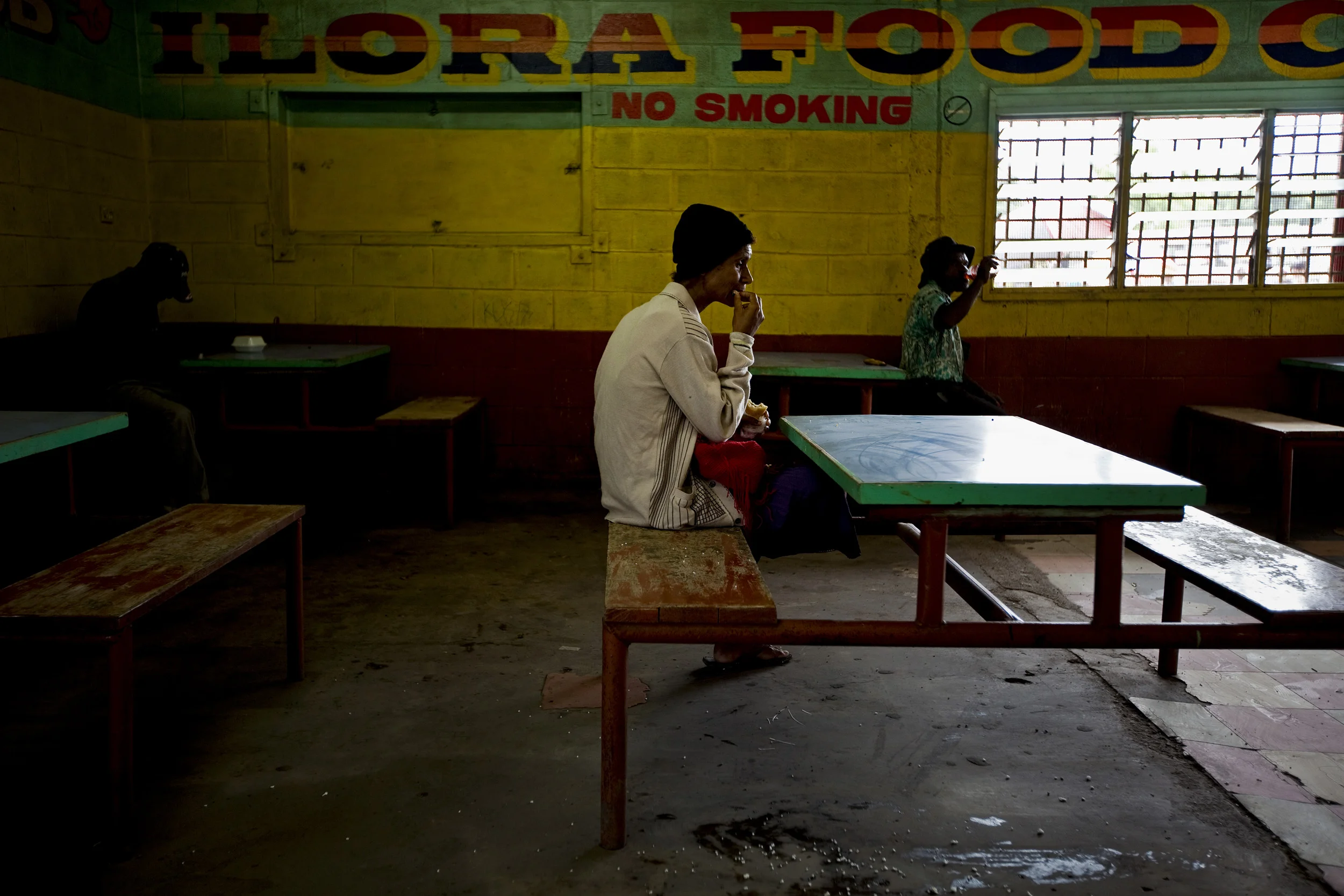
PORT MORSEBY, PAPUA NEW GUINEA-DECEMBER 2008: Scenes around Port Morseby, the capital city of Papua New Guinea, 25 December 2008. (Photo by Brent Stirton/Reportage by Getty Images.)

PORT MORSEBY, PAPUA NEW GUINEA-DECEMBER 2008: Scenes of unemployed locals around Port Morseby, the capital city of Papua New Guinea, 25 December 2008. (Photo by Brent Stirton/Reportage by Getty Images.)
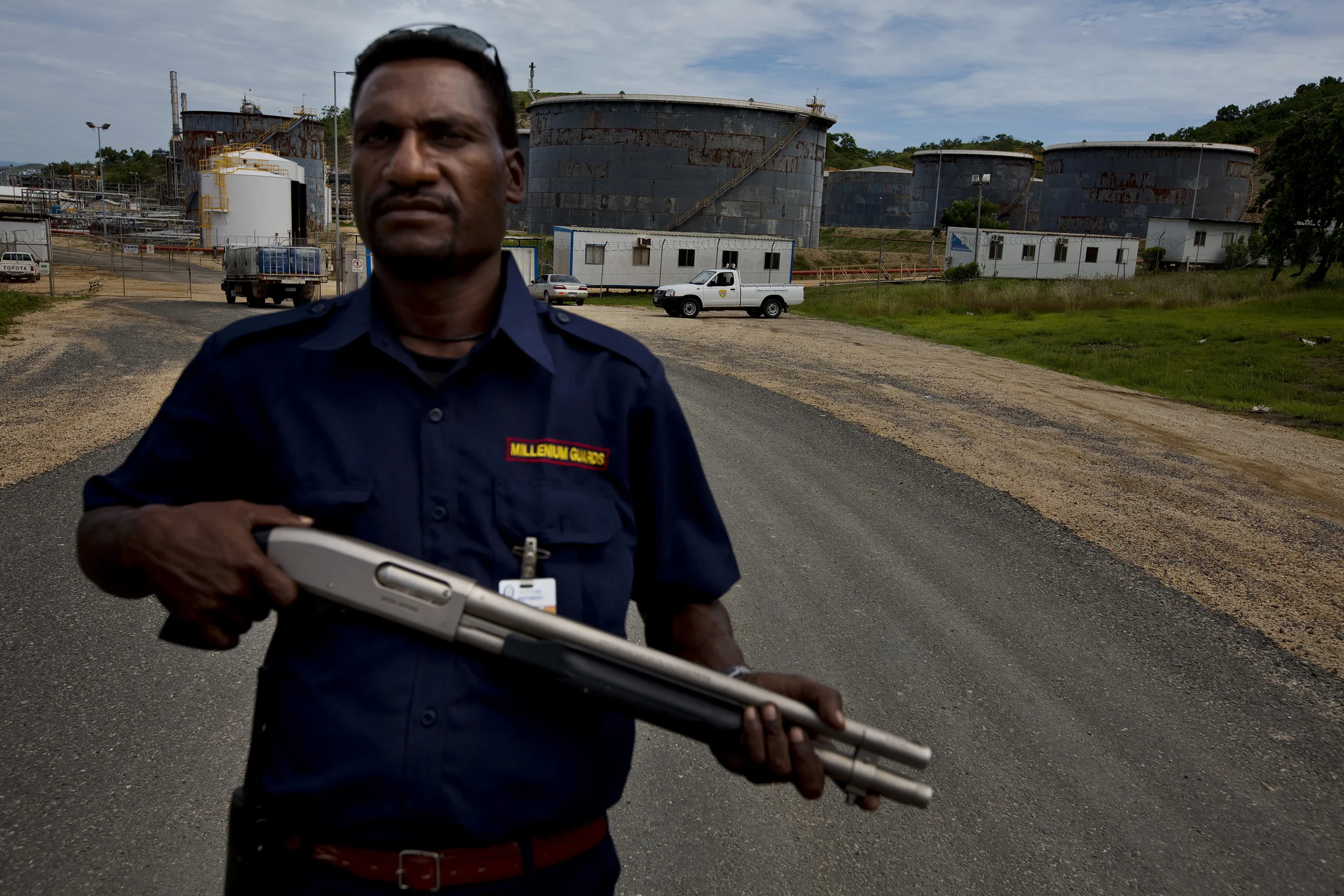
PORT MORSEBY, PAPUA NEW GUINEA-DECEMBER 2008: A security guard stands watch over a new refinery which has been built to handle oil and natural gas from the Highlands region of Tari which will be piped down to Port Morseby, the capital city of Papua New Guinea, 25 December 2008. (Photo by Brent Stirton/Reportage by Getty Images.)
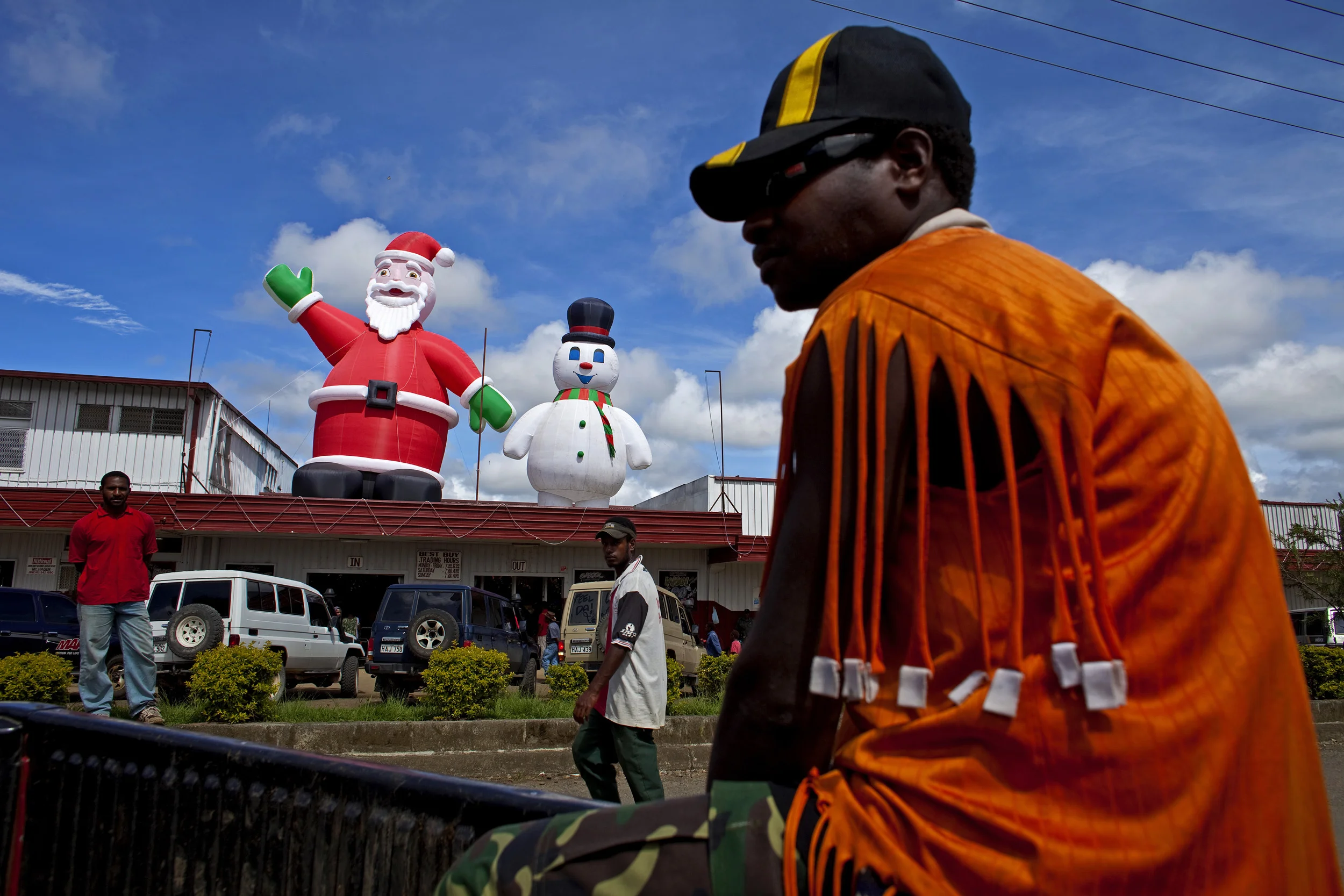
MOUNT HAGEN, HIGHLANDS, PAPUA NEW GUINEA-DECEMBER 2008: Sureal Xmas scenes outside a supermarket in Mount Hagen, Papua New Guinea, 16 December 2008.(Photo by Brent Stirton/Reportage for Getty Images.)

PORT MORSEBY, PAPUA NEW GUINEA-DECEMBER 2008: Scenes around Port Morseby, the capital city of Papua New Guinea, 25 December 2008. (Photo by Brent Stirton/Reportage by Getty Images.)
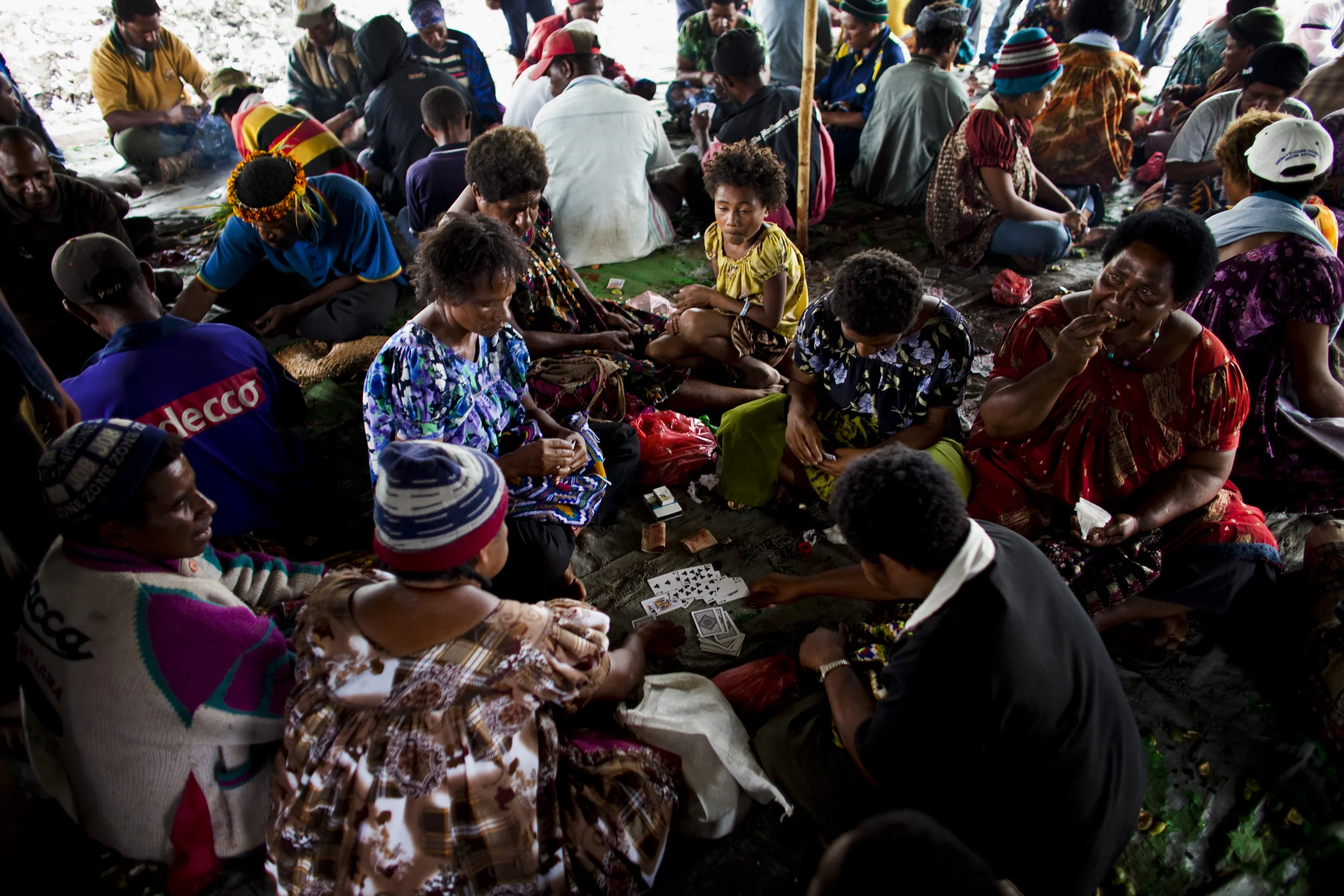
MOUNT HAGEN, HIGHLANDS, PAPUA NEW GUINEA-DECEMBER 2008: Scenes of highland people gambling in large groups at a local roadside market in Mount Hagen, Papua New Guinea, 16 December 2008. People sell beetle-nut, vegetables, cigarettes at this market and also gamble at Bingo and local card games called Bam and Chicken. There is also a gambling game involving darts at almost every market in the highlands. (Photo by Brent Stirton/Reportage for Getty Images.)
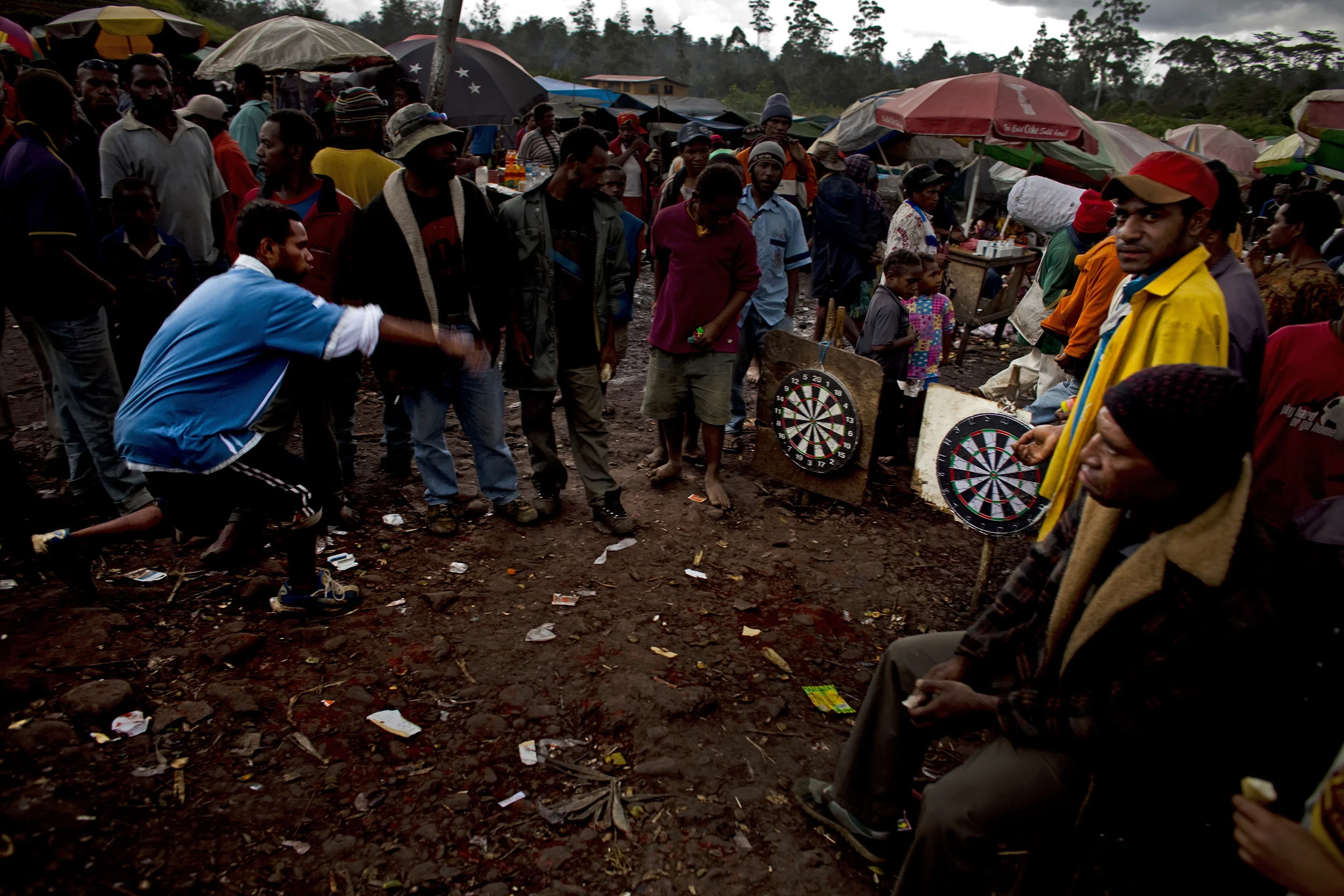
MOUNT HAGEN, HIGHLANDS, PAPUA NEW GUINEA-DECEMBER 2008: Scenes of highland people at a local roadside market in Mount Hagen, Papua New Guinea, 16 December 2008. People sell beetle-nut, vegetables, cigarettes at this market and also gamble at Bingo and local card games called Bam and Chicken. There is also a gambling game involving darts at almost every market in the highlands. (Photo by Brent Stirton/Reportage for Getty Images.)
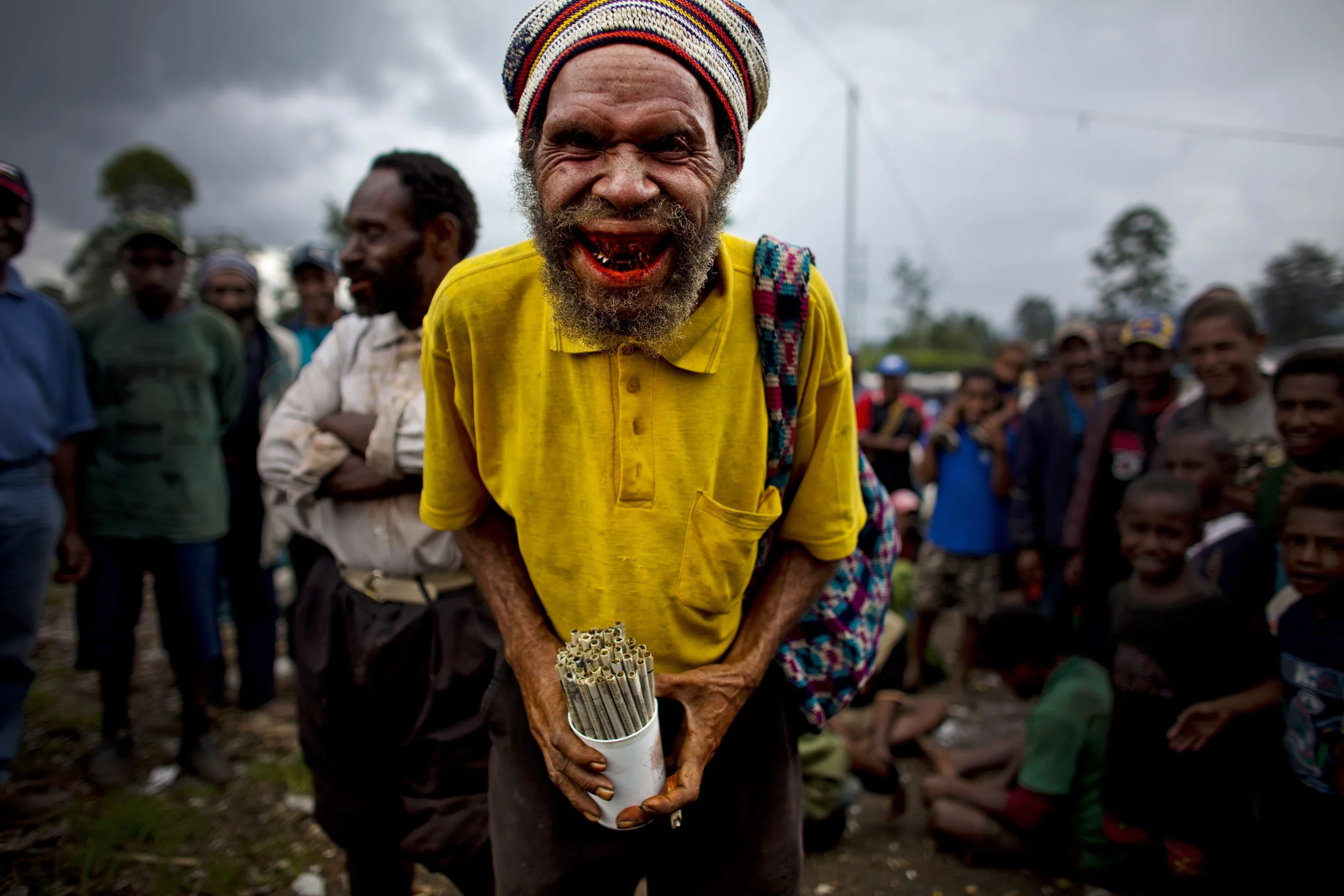
MOUNT HAGEN, HIGHLANDS, PAPUA NEW GUINEA-DECEMBER 2008: Scenes of highland people at a local roadside market in Mount Hagen, Papua New Guinea, 16 December 2008. People sell beetle-nut, vegetables, cigarettes at this market and also gamble at Bingo and local card games called Bam and Chicken. There is also a gambling game involving darts at almost every market in the highlands. (Photo by Brent Stirton/Reportage for Getty Images.)
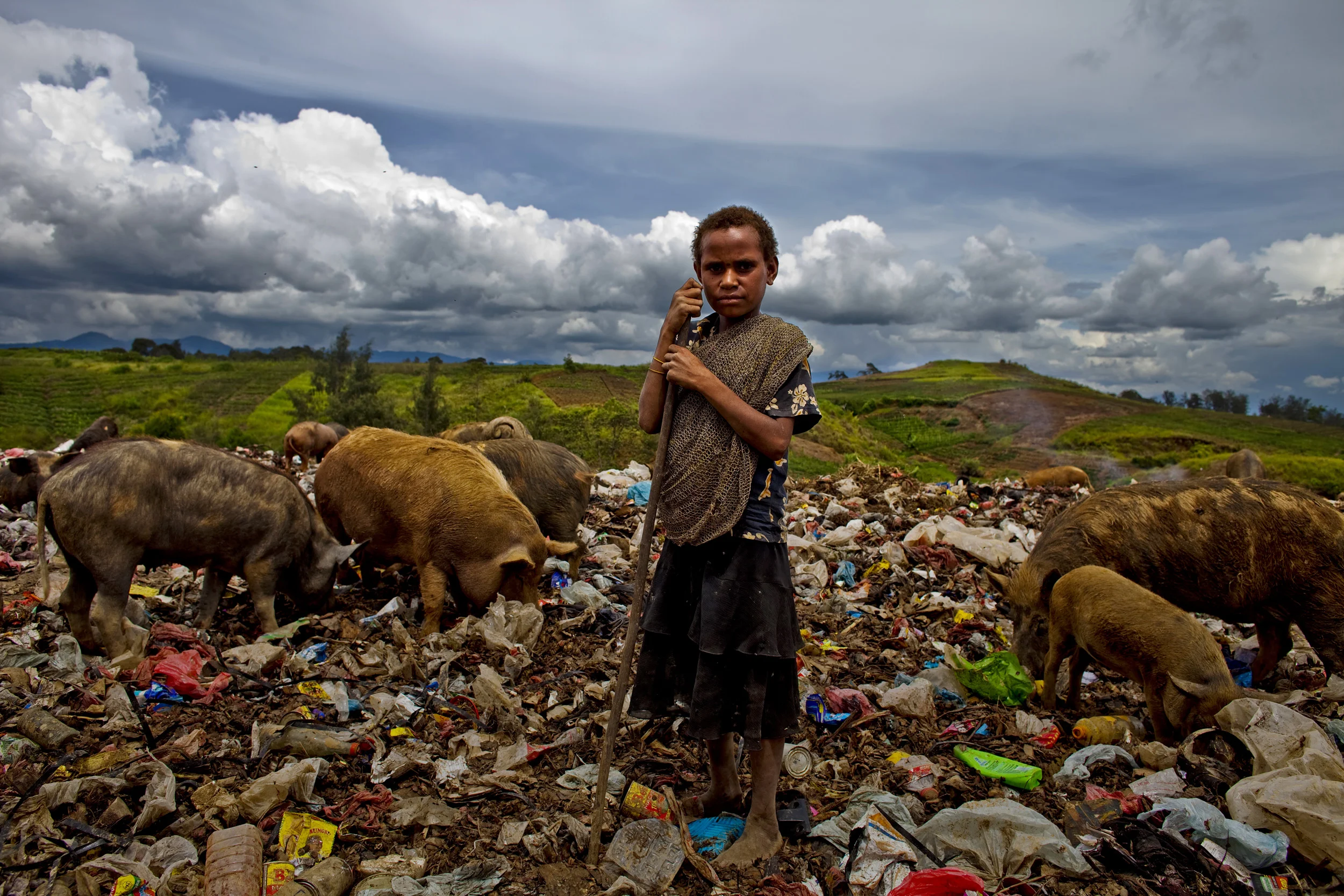
MOUNT HAGEN, HIGHLANDS, PAPUA NEW GUINEA-DECEMBER 2008: Scenes from the Dump in Mount Hagen which is populated by people who drifted to the town in the 1970's and used the dump to farm pigs, a viable wealth stream in Papua New Guinea.,Mount Hagen, Papua New Guinea, 16 December 2008.(Photo by Brent Stirton/Reportage for Getty Images.)
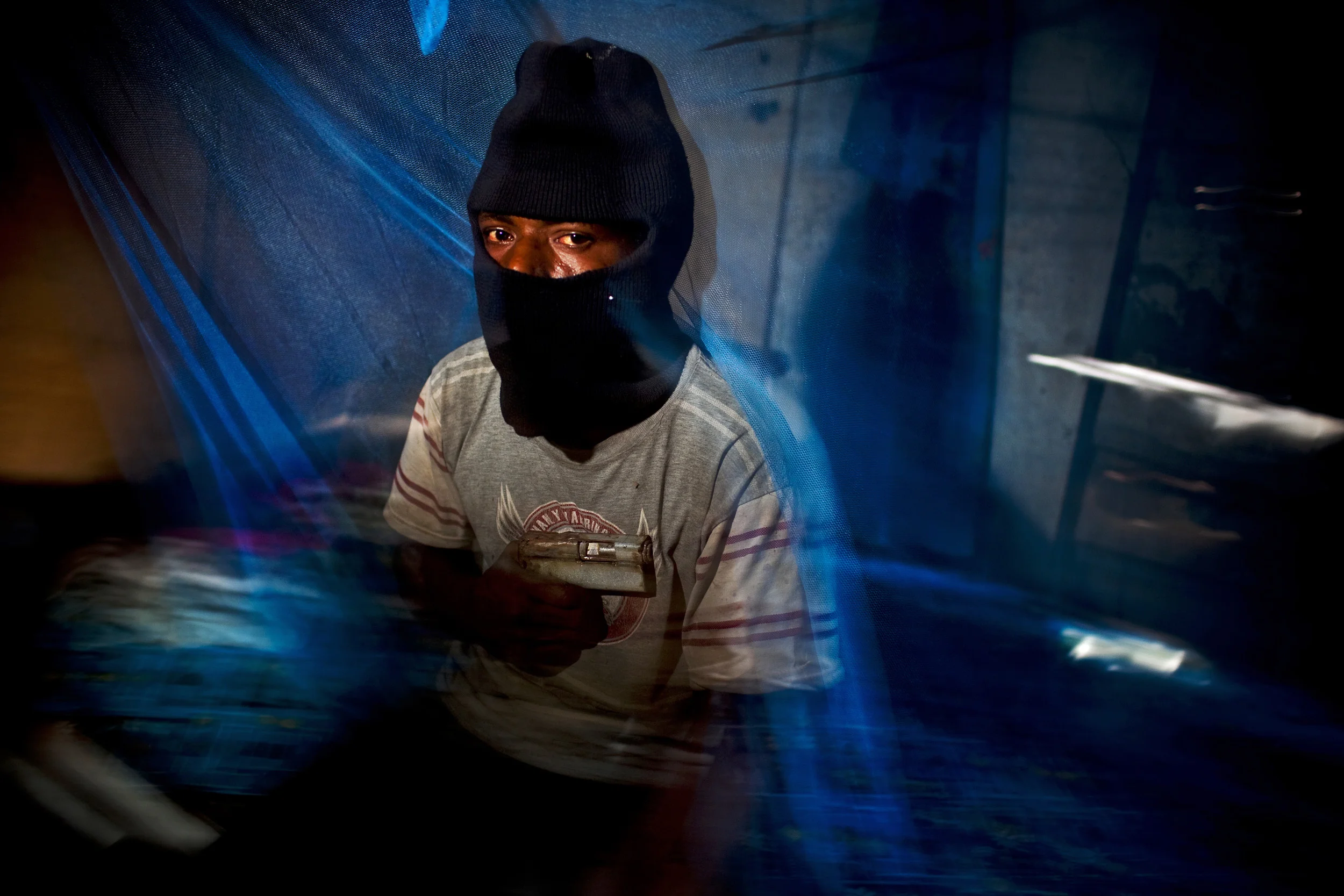
EIGHT MILE SETTLEMENT, PORT MORSEBY, PAPUA NEW GUINEA-DECEMBER 2008: A "Raskol" gang member with his hand-made gun photographed in the impoverished eight mile settlement in Port Morseby, Papua New Guinea, 23 December 2008. These "junior" gangsters carry out robberies and other criminal activities every weekend, targetting people they consider to be "Bigshots. Their only regret is the death of good friends in these robberies in shoot-outs with the police. All four boys are under 20 and have grown up in Port Morseby, the dangerous capital city of PNG. Despite growing up here and seeing first hand the progress of the city, they feel all the changes are for the worse and would like to move back to the villages where their fathers are from and farm for a living instead of the city life. None of the boys envisage giving up their "Raskol" life-style in the meantime as they see now other way to earn money in their society. (Photo by Brent Stirton/Reportage by Getty Images.)

EIGHT MILE SETTLEMENT, PORT MORSEBY, PAPUA NEW GUINEA-DECEMBER 2008: Four "Raskol" gang members and a hand-made gun photographed in the impoverished eight mile settlement in Port Morseby, Papua New Guinea, 23 December 2008. These "junior" gangsters carry out robberies and other criminal activities every weekend, targetting people they consider to be "Bigshots. Their only regret is the death of good friends in these robberies in shoot-outs with the police. All four boys are under 20 and have grown up in Port Morseby, the dangerous capital city of PNG. Despite growing up here and seeing first hand the progress of the city, they feel all the changes are for the worse and would like to move back to the villages where their fathers are from and farm for a living instead of the city life. None of the boys envisage giving up their "Raskol" life-style in the meantime as they see now other way to earn money in their society. (Photo by Brent Stirton/Reportage by Getty Images.)

PORT MORSEBY, PAPUA NEW GUINEA-JANUARY 2008: A young mother who is a victim of domestic violence hides her face to protect her identity, Port Morseby, Papua New Guinea, 8 January 2009. The woman's husband took up with another woman and when she confronted him he took her into the bush, hit her over the head with a bush-knife and broke her arm with an iron bar. Domestic violence is not part of traditional society in Papua New Guinea but it is now wide-spread and common. Social workers blame modern phenomenon such as money issues, gambling, alcohol and infidelity as a source of the problem. (Photo by Brent Stirton/Reportage by Getty Images.)

PORT MORSEBY, PAPUA NEW GUINEA-DECEMBER 2008: A young Aids Orphan seen with his deceased mother's family in a poor settlement in Port Morseby, the capital city of Papua New Guinea, 25 December 2008. Hiv Aids is a relatively new but devastating disease in Papua New Guinea. Modern life has seen a relaxation of attitudes to infidelity and this created a booming sex industry. It is currently estimated that PNG may already have an HIV statistic as high as 11% across the population. Illiteracy, a slow government response combined with superstition and taboos with regards to talking abut sex have fostered the ability of the disease to spread quickly amongst PNG's population. (Photo by Brent Stirton/Reportage by Getty Images.)
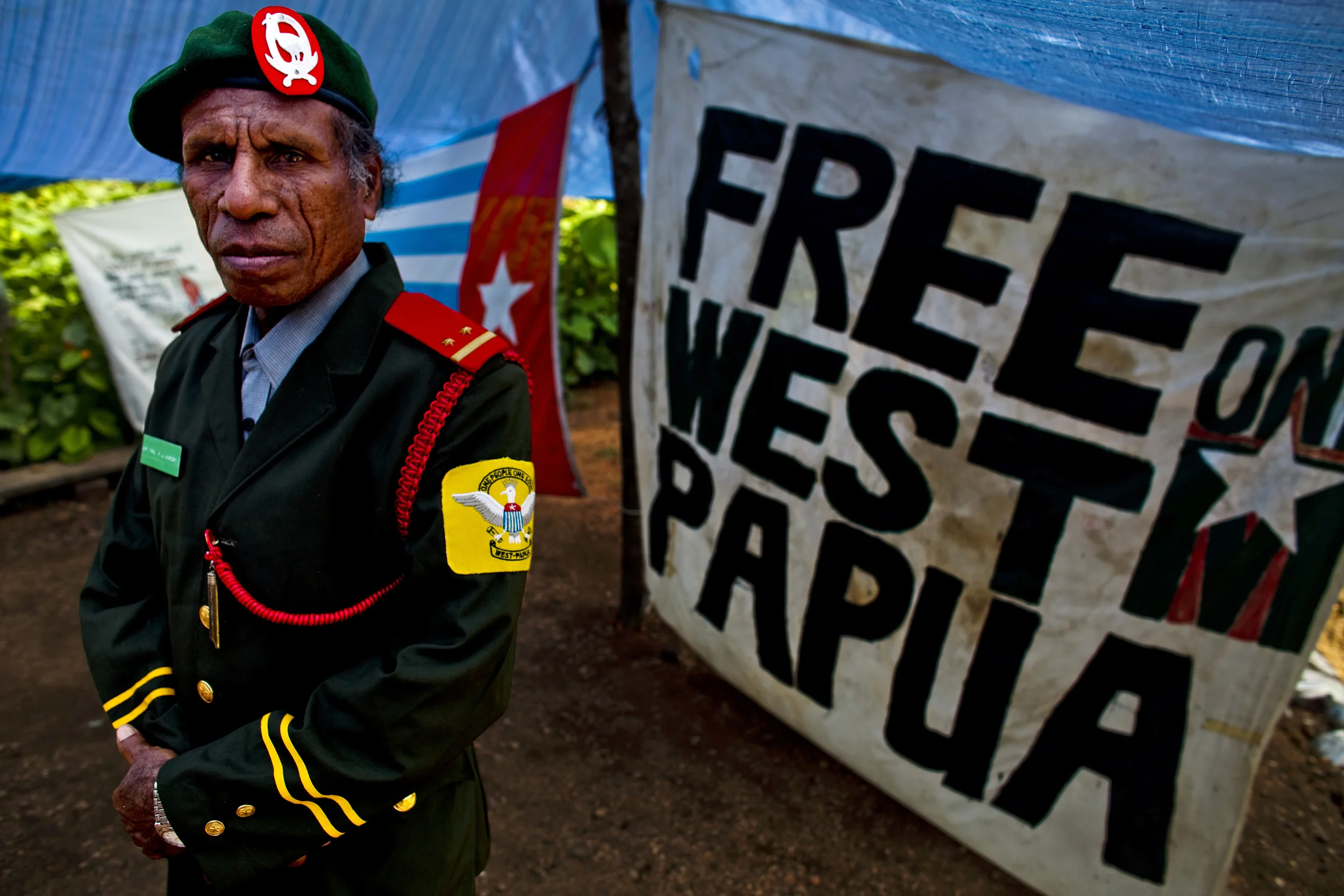
OUTSKIRTS OF PORT MORSEBY, PAPUA NEW GUINEA-DECEMBER 2008: Refugee members of the OPM Free West Papua movement in a refugee camp on the outskirts of Port Morseby, Papua New Guinea, 23 December 2008. Many here have been political refugees for over 30 years. OPM's followers have been against the Indoneasean colonisation of West Papua since 1969 when the Indonesean government rigged a vote in West Papua to have it included in Indonesean colonial property. Today West Papua forms the second largest component in Indonesea's economy and they control the mining and other natural resources of West Papua through the use of military force and the migration of Indoneaseans to West Papua. OPM is fighting for the international Community to recognise West Papuan independence which was recognised in 1971 but handed over to the Indoneseans in a rigged election. Today OPM continues to operate against the Indoneasean Army in the Jungles of West Papua but they are vastly outnumbers and out-gunned and many of their people have had to flee West Papua and try to live in PNG, not an easy task. This group have lived as refugees for over 30 years and continue to be moved on from the land on which they camp. They have had very little help and are already on a third generation of children born into these circumstances. Most of the men in this camp are active members of OPM or have been political prisoners under the Indoneseans. They continue to be targets of the Indonesean Army. (Photo by Brent Stirton/Reportage by Getty Images.)

OUTSKIRTS OF PORT MORSEBY, PAPUA NEW GUINEA-DECEMBER 2008: Refugee members of the OPM Free West Papua movement in a refugee camp on the outskirts of Port Morseby, Papua New Guinea, 23 December 2008. Many here have been political refugees for over 30 years. OPM's followers have been against the Indoneasean colonisation of West Papua since 1969 when the Indonesean government rigged a vote in West Papua to have it included in Indonesean colonial property. Today West Papua forms the second largest component in Indonesea's economy and they control the mining and other natural resources of West Papua through the use of military force and the migration of Indoneaseans to West Papua. OPM is fighting for the international Community to recognise West Papuan independence which was recognised in 1971 but handed over to the Indoneseans in a rigged election. Today OPM continues to operate against the Indoneasean Army in the Jungles of West Papua but they are vastly outnumbers and out-gunned and many of their people have had to flee West Papua and try to live in PNG, not an easy task. This group have lived as refugees for over 30 years and continue to be moved on from the land on which they camp. They have had very little help and are already on a third generation of children born into these circumstances. Most of the men in this camp are active members of OPM or have been political prisoners under the Indoneseans. They continue to be targets of the Indonesean Army. (Photo by Brent Stirton/Reportage by Getty Images.)

OUTSKIRTS OF PORT MORSEBY, PAPUA NEW GUINEA-DECEMBER 2008: Refugee members of the OPM Free West Papua movement in a refugee camp on the outskirts of Port Morseby, Papua New Guinea, 23 December 2008. Many here have been political refugees for over 30 years. OPM's followers have been against the Indoneasean colonisation of West Papua since 1969 when the Indonesean government rigged a vote in West Papua to have it included in Indonesean colonial property. Today West Papua forms the second largest component in Indonesea's economy and they control the mining and other natural resources of West Papua through the use of military force and the migration of Indoneaseans to West Papua. OPM is fighting for the international Community to recognise West Papuan independence which was recognised in 1971 but handed over to the Indoneseans in a rigged election. Today OPM continues to operate against the Indoneasean Army in the Jungles of West Papua but they are vastly outnumbers and out-gunned and many of their people have had to flee West Papua and try to live in PNG, not an easy task. This group have lived as refugees for over 30 years and continue to be moved on from the land on which they camp. They have had very little help and are already on a third generation of children born into these circumstances. Most of the men in this camp are active members of OPM or have been political prisoners under the Indoneseans. They continue to be targets of the Indonesean Army. (Photo by Brent Stirton/Reportage by Getty Images.)
